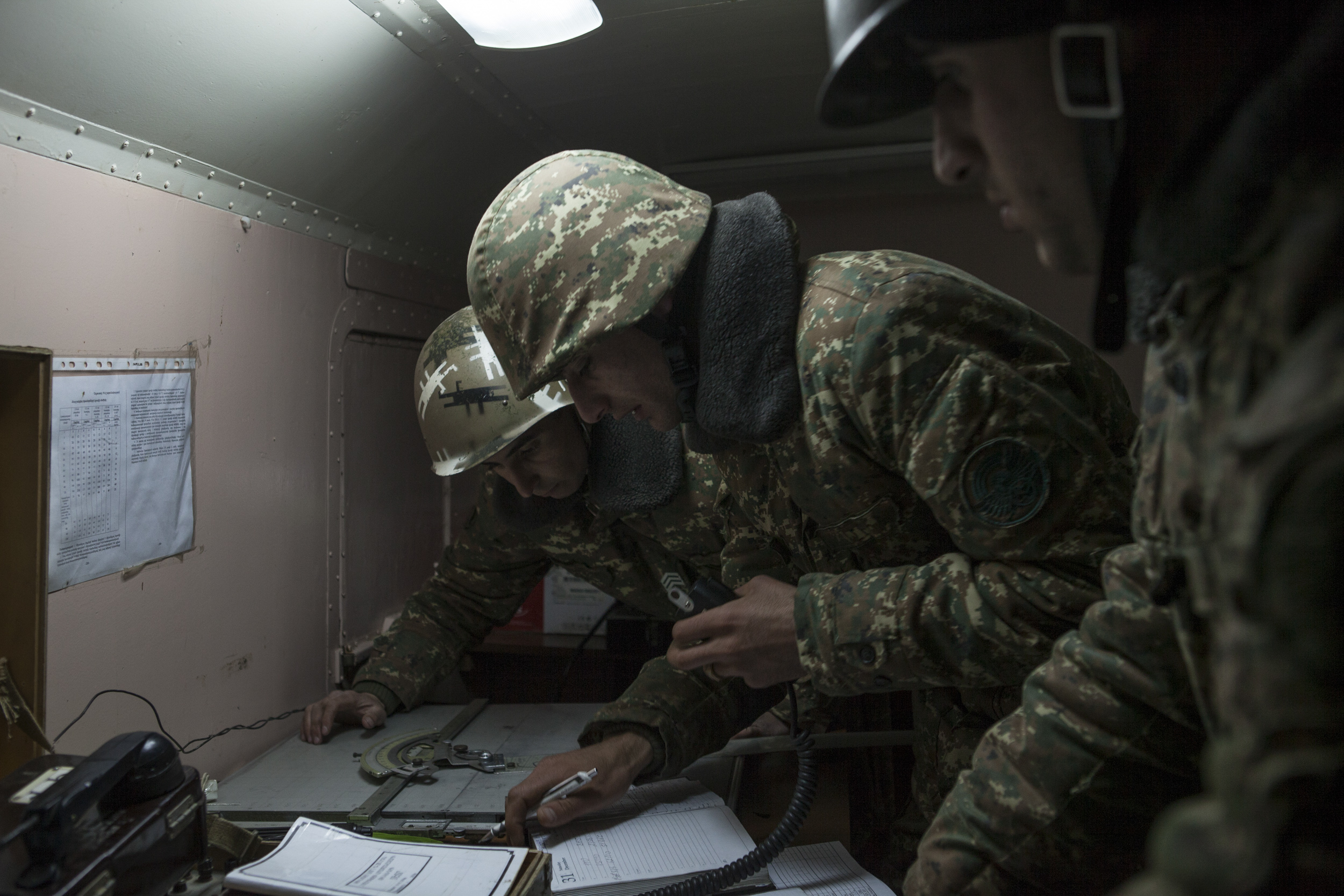
Early morning on April 2, 2016, in the disputed territory of Nagorno-Karabakh, a 20-year fragile “ceasefire” came to an end when Azerbaijani forces attacked, and fresh fighting broke out on the Line of Contact between Azerbaijani, and the Armenian and Karabakh armed forces.
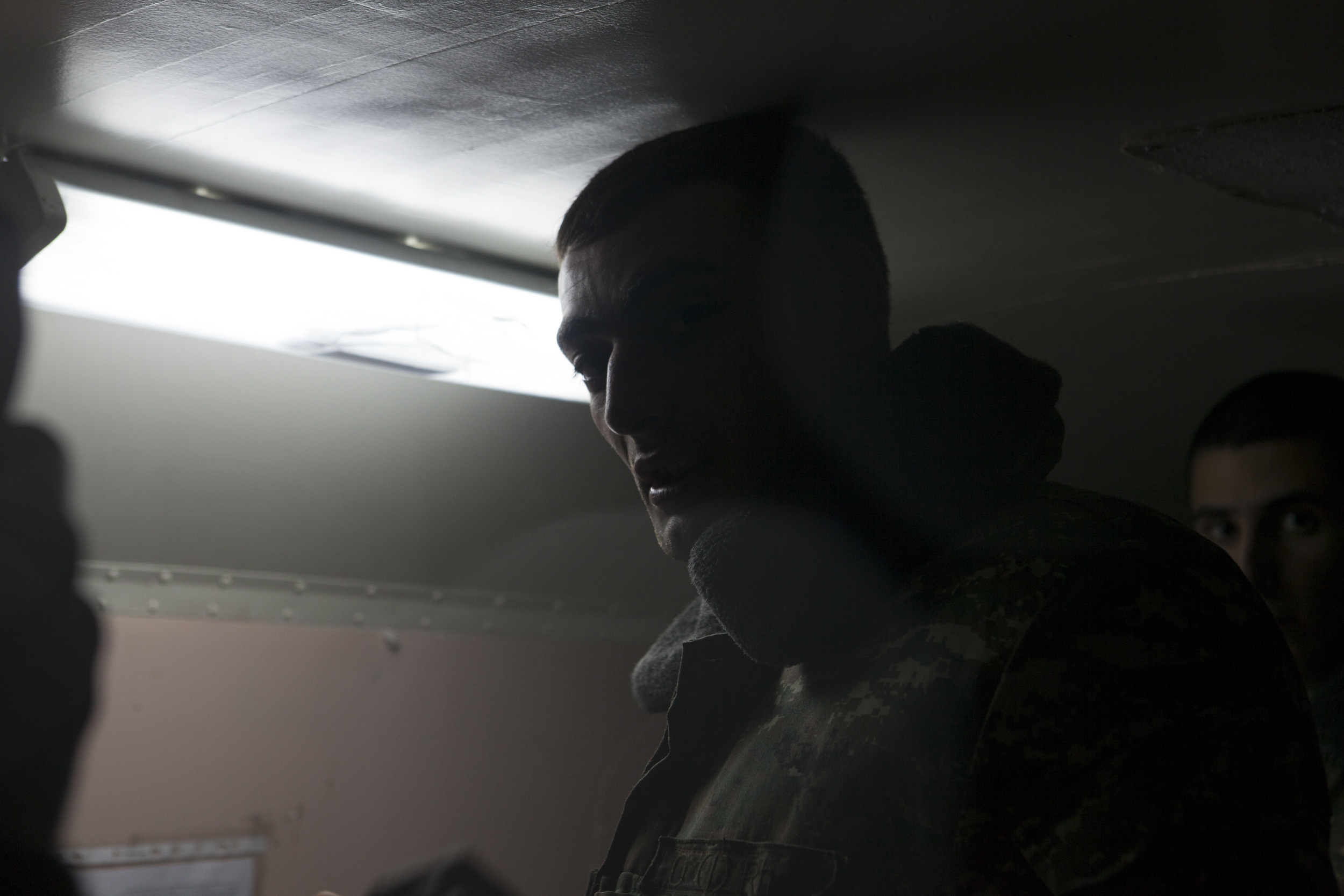
The intensified fighting that preceded the following days became known as the Four-Day War. The ethnic Armenian populated villages of Martakert, Mataghis and Talsih, where these photos were taken, were evacuated and lives again were uprooted.
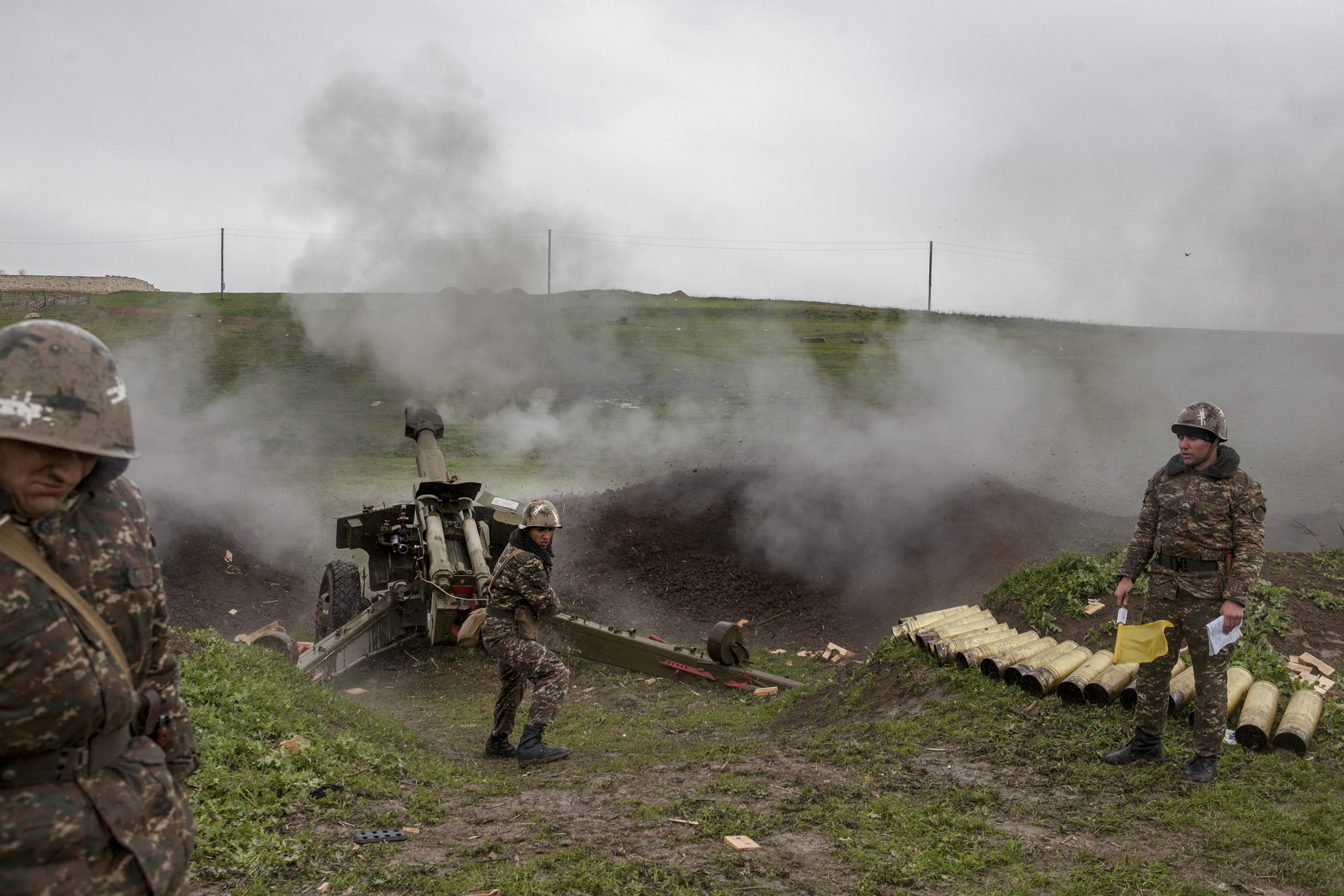
Nagorno-Karabakh is a landlocked mountainous region within Azerbajian populated and backed by neighboring Armenia. From 1988 to 1994 Azerbaijan and Armenia fought a bloody war, with more than 50,000 casualties, over the territory.
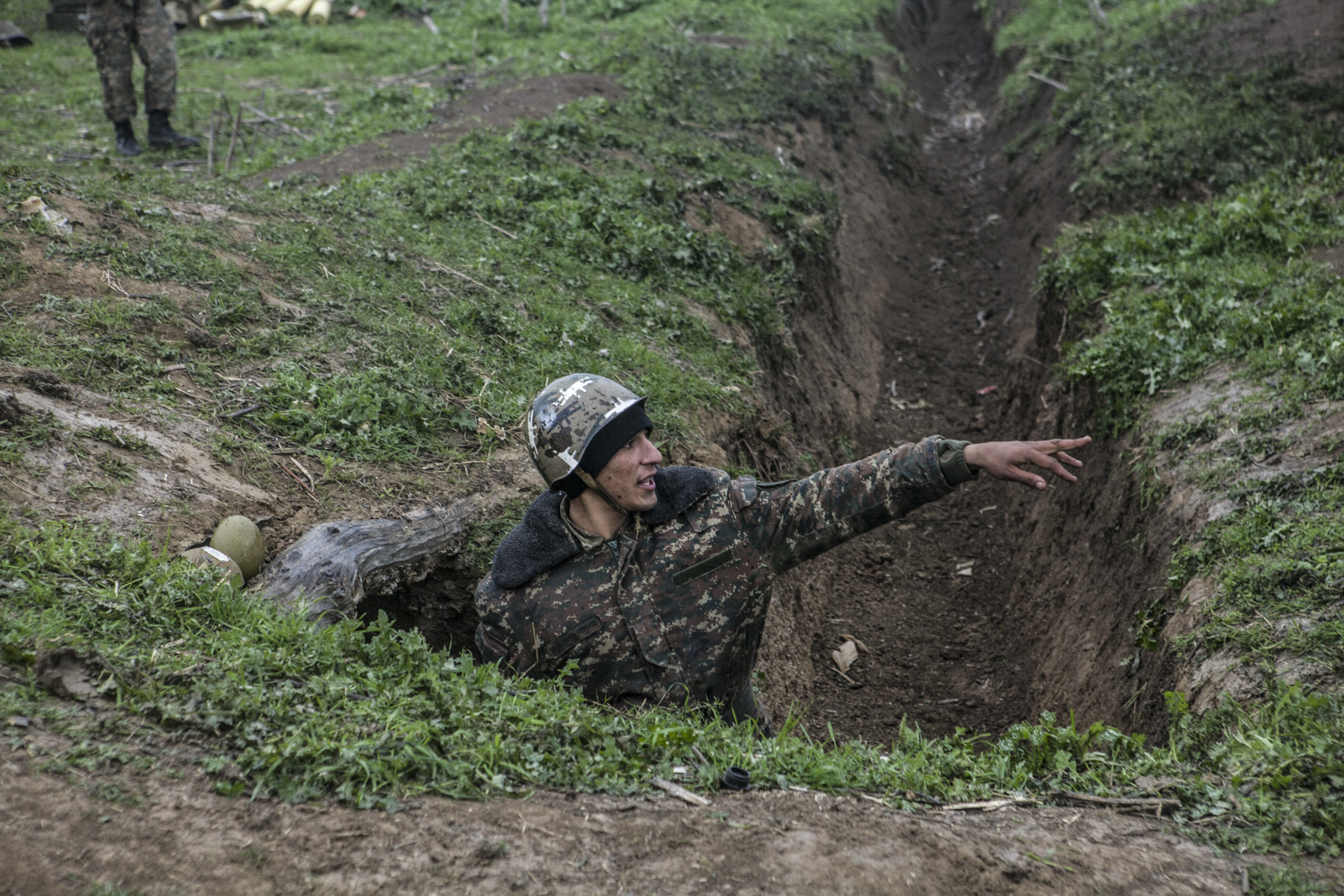
The war ended in a ceasefire agreement, and in the hands of ethnic Armenians. A line of contact was established, and for more than 20 years a fragile ceasefire existed until the morning of April 2, 2016.
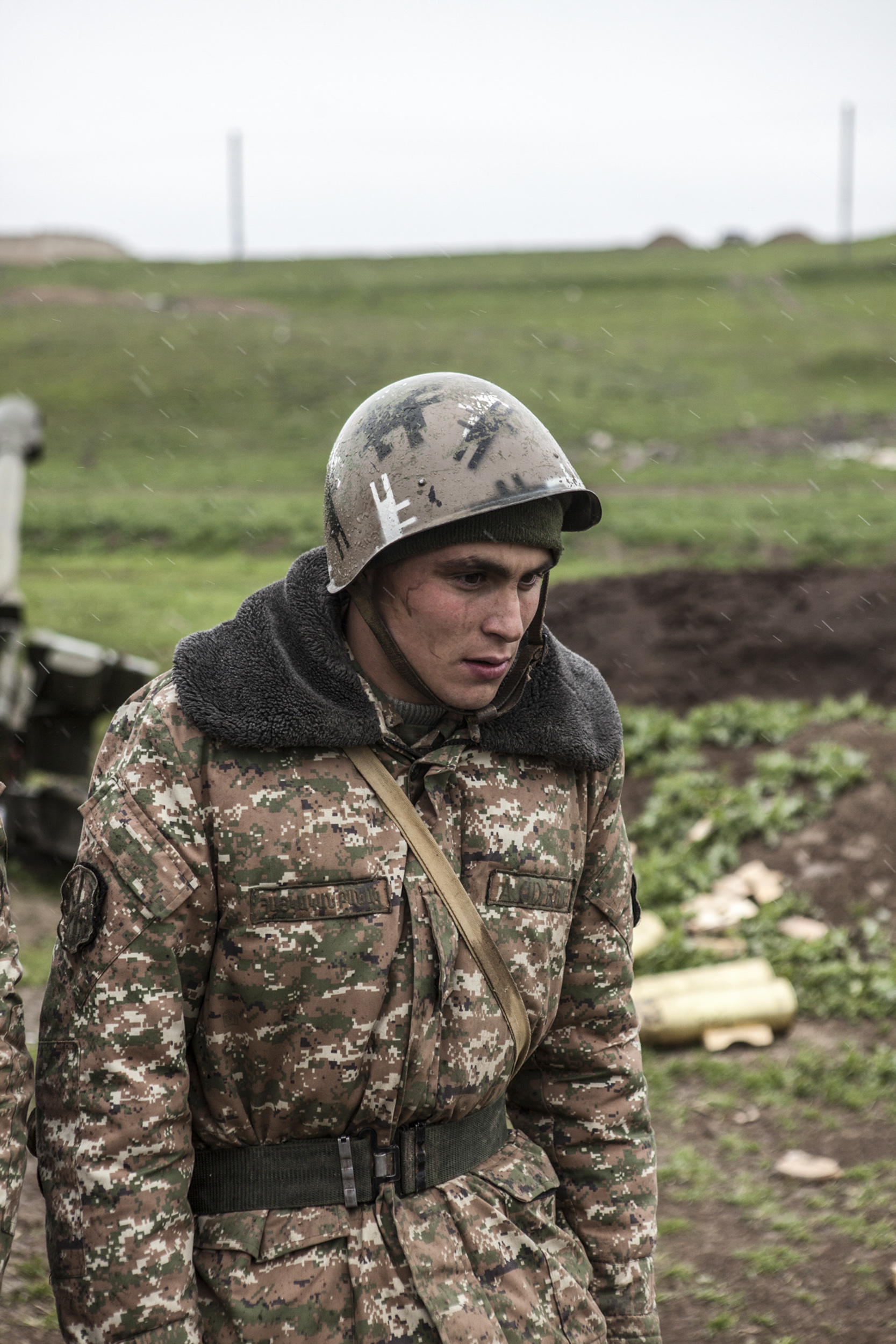
At the end of four days of fighting Armenian sources report a loss of 91 soldiers and 9 civilians, and Azerbaijan sources report a loss ranging 31-94. Both sides claim higher losses on the other side.
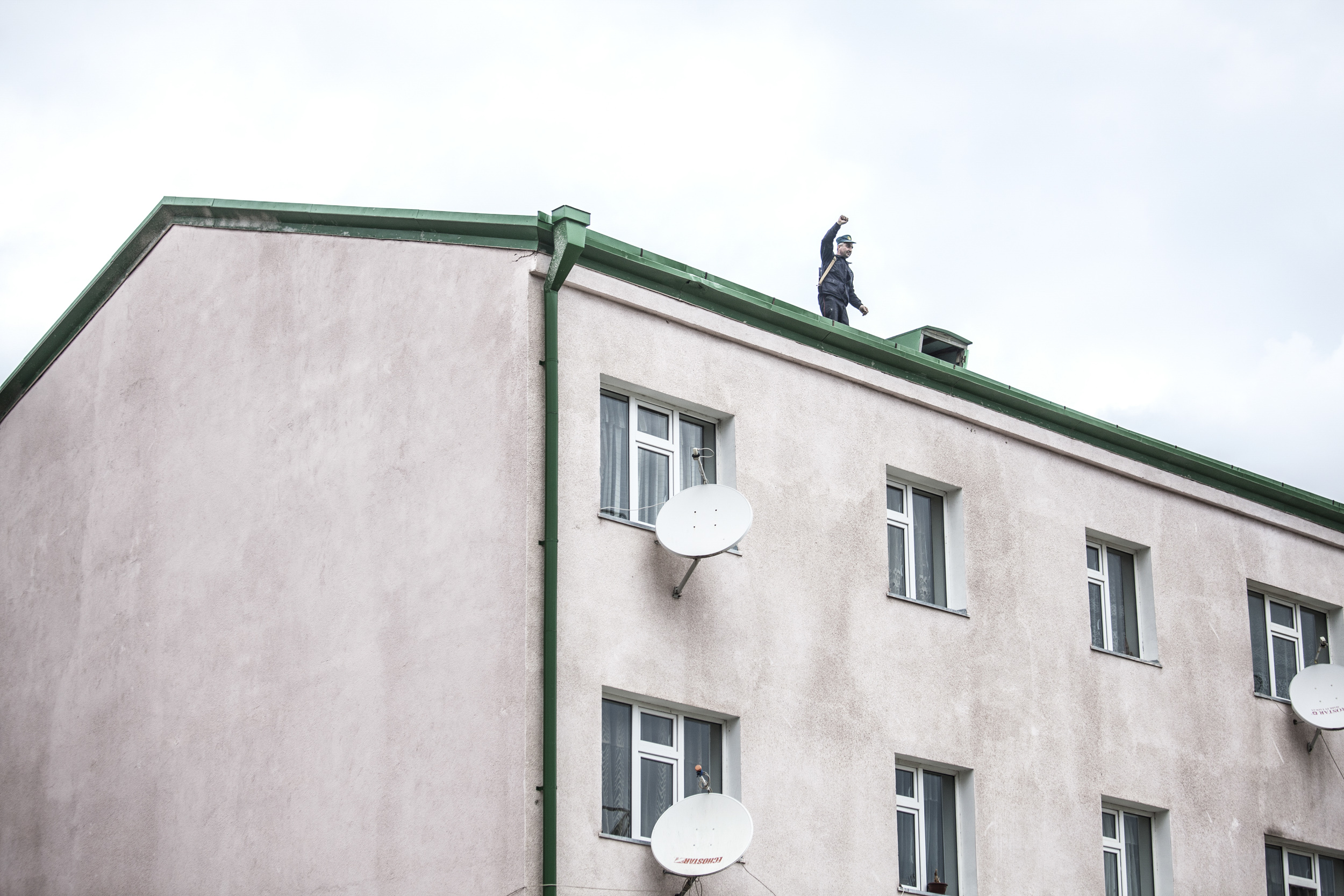
This gallery is a collection of images from April 3-5, and images from the end of the month.
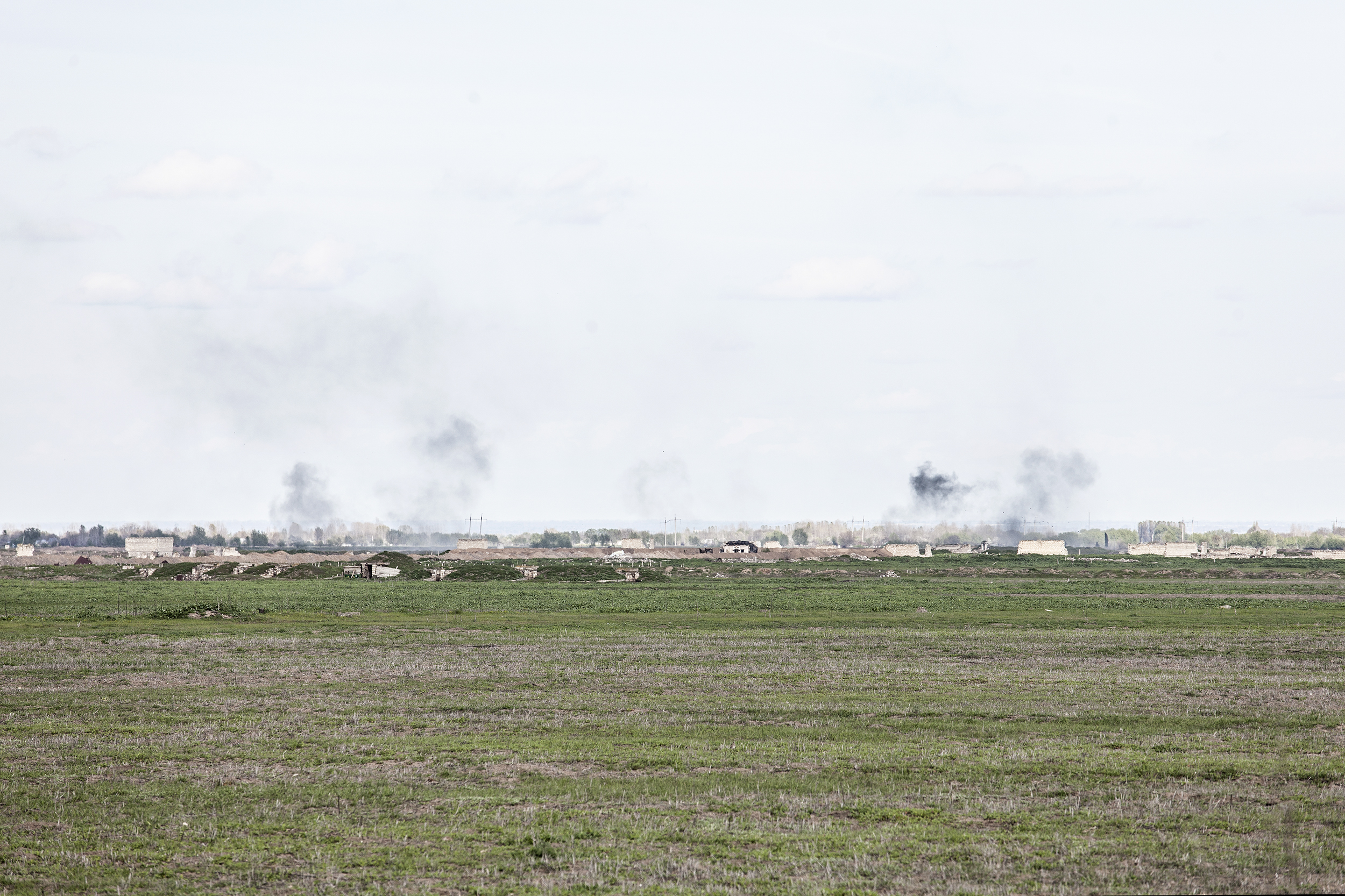
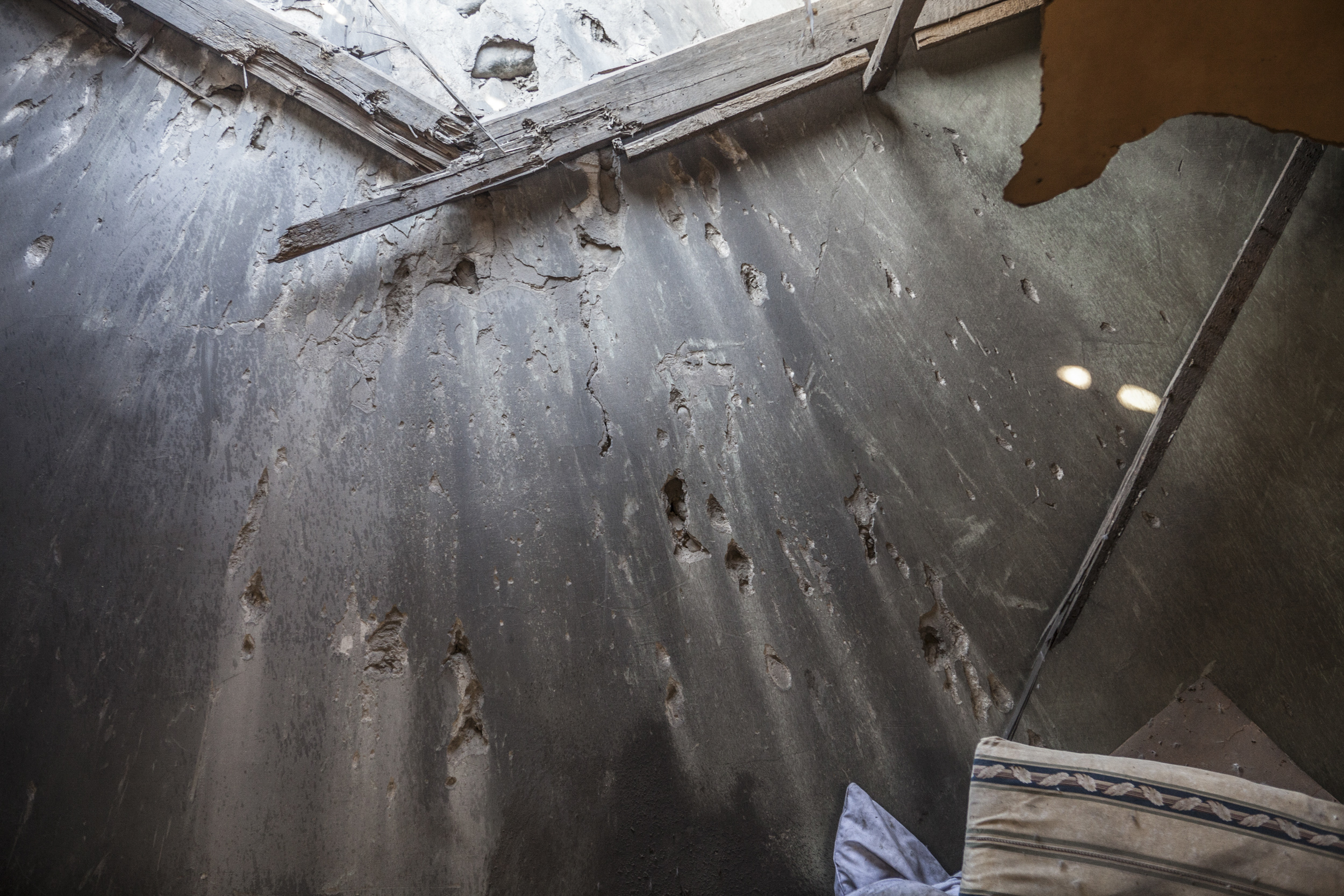
Hastily, villagers were forced to abandon their homes and belongings left in ruins by Azerbaijani shelling.
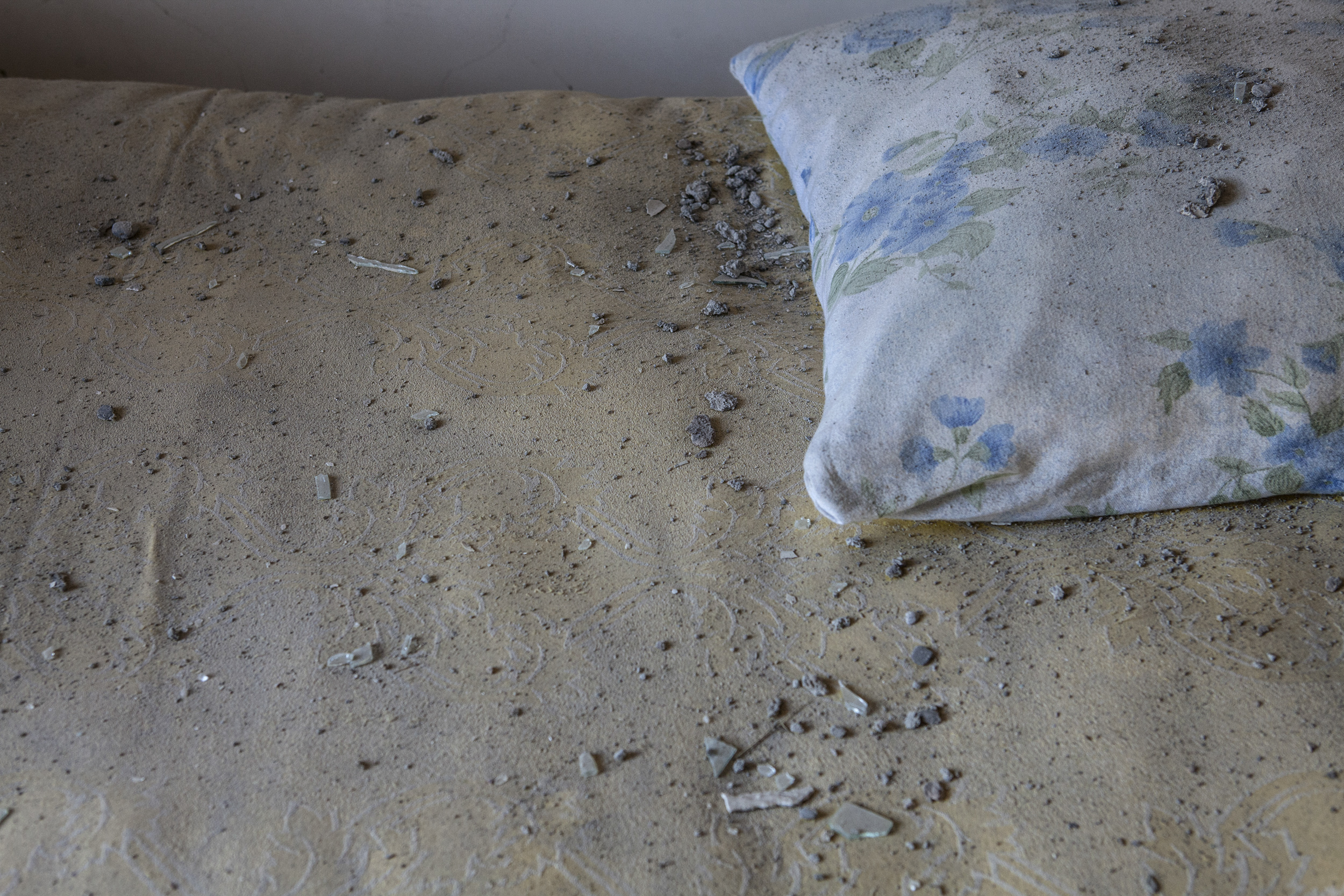
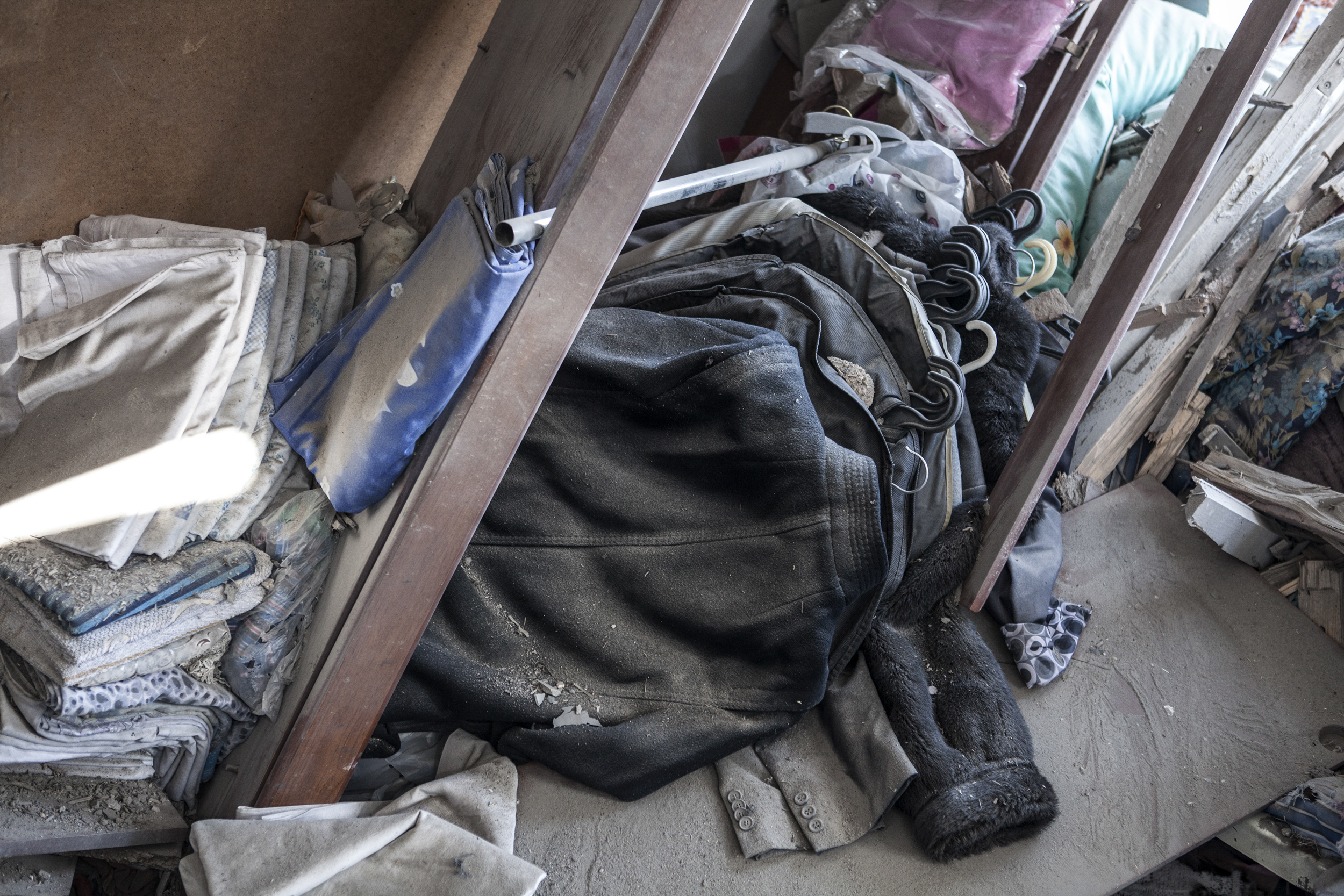
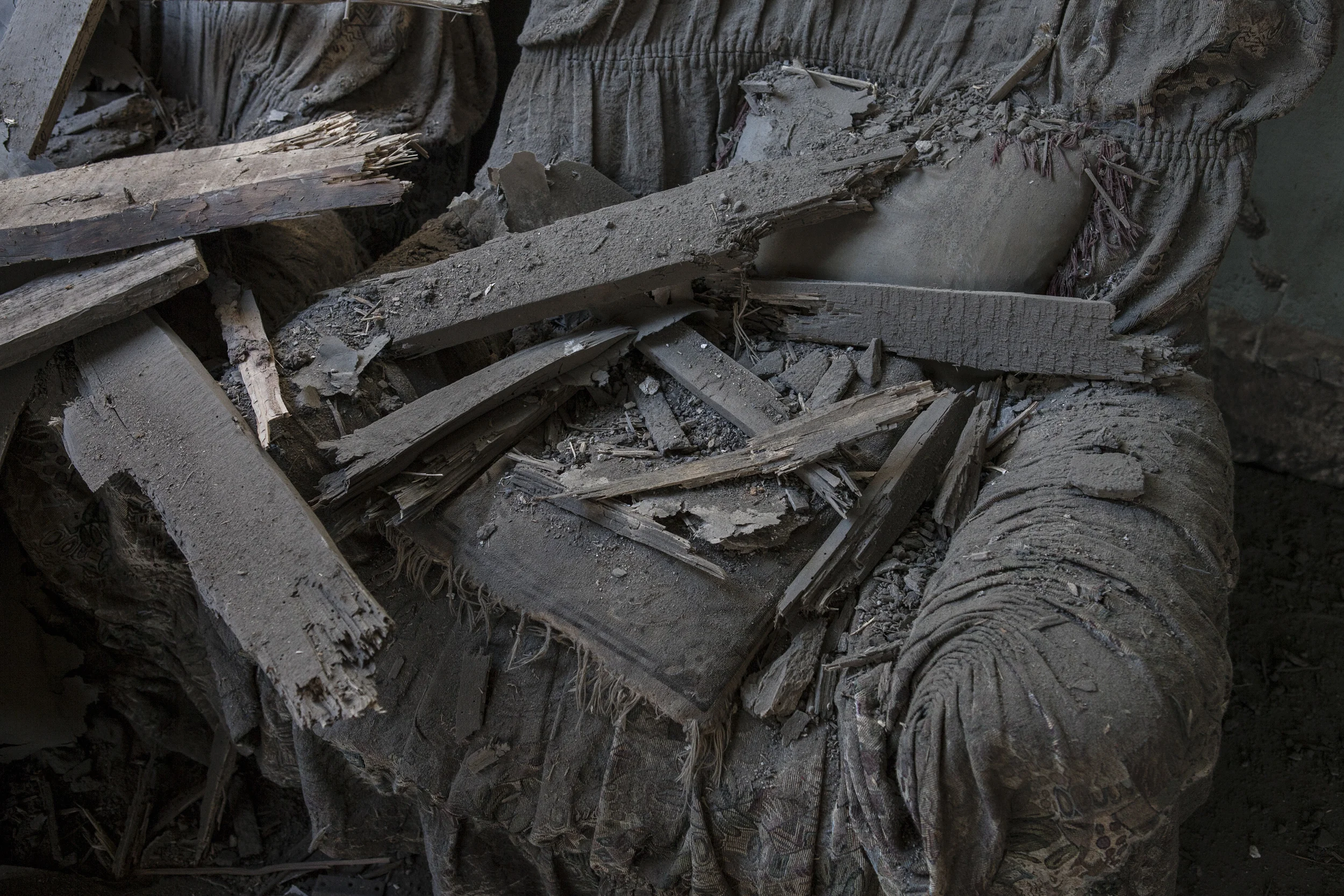
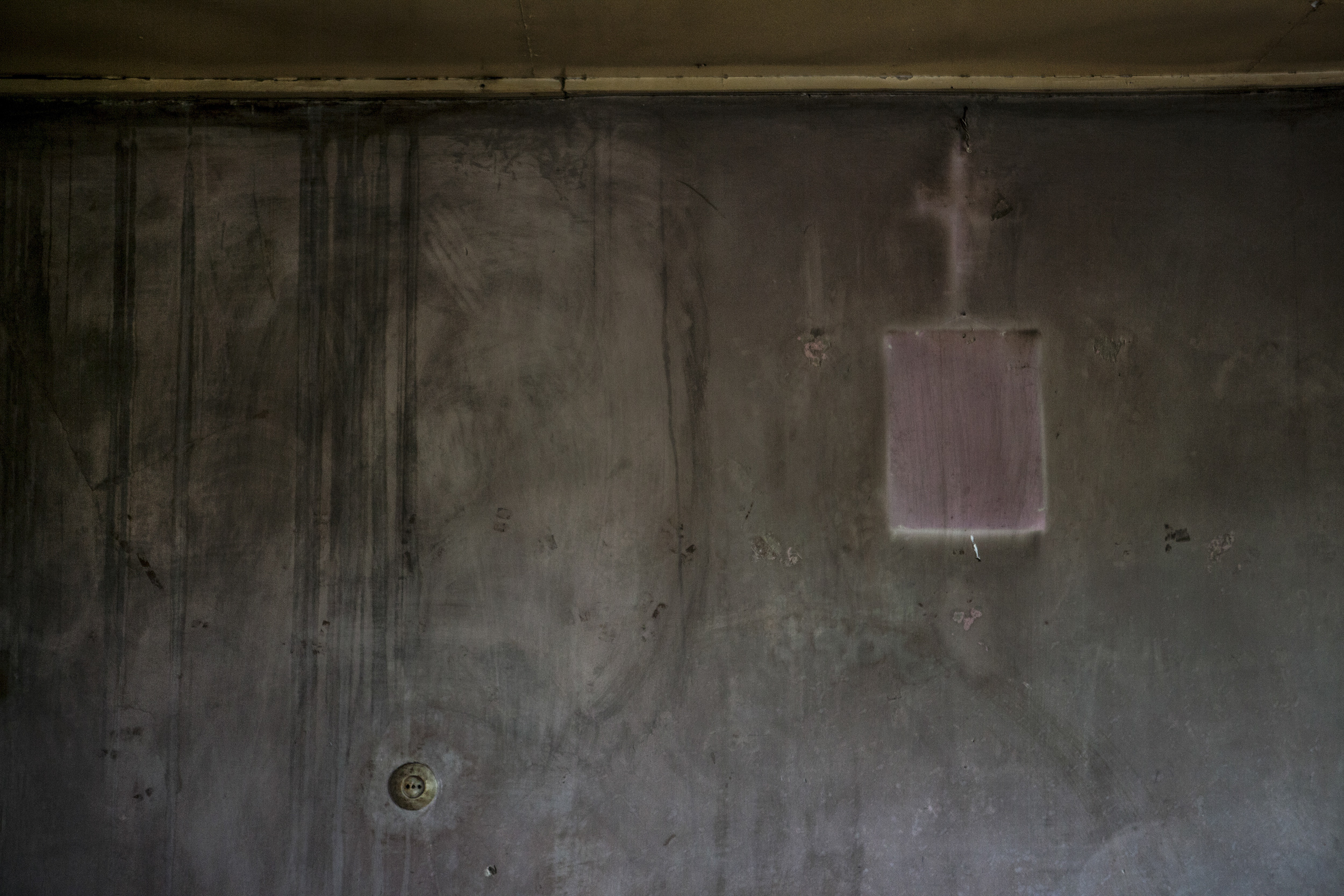
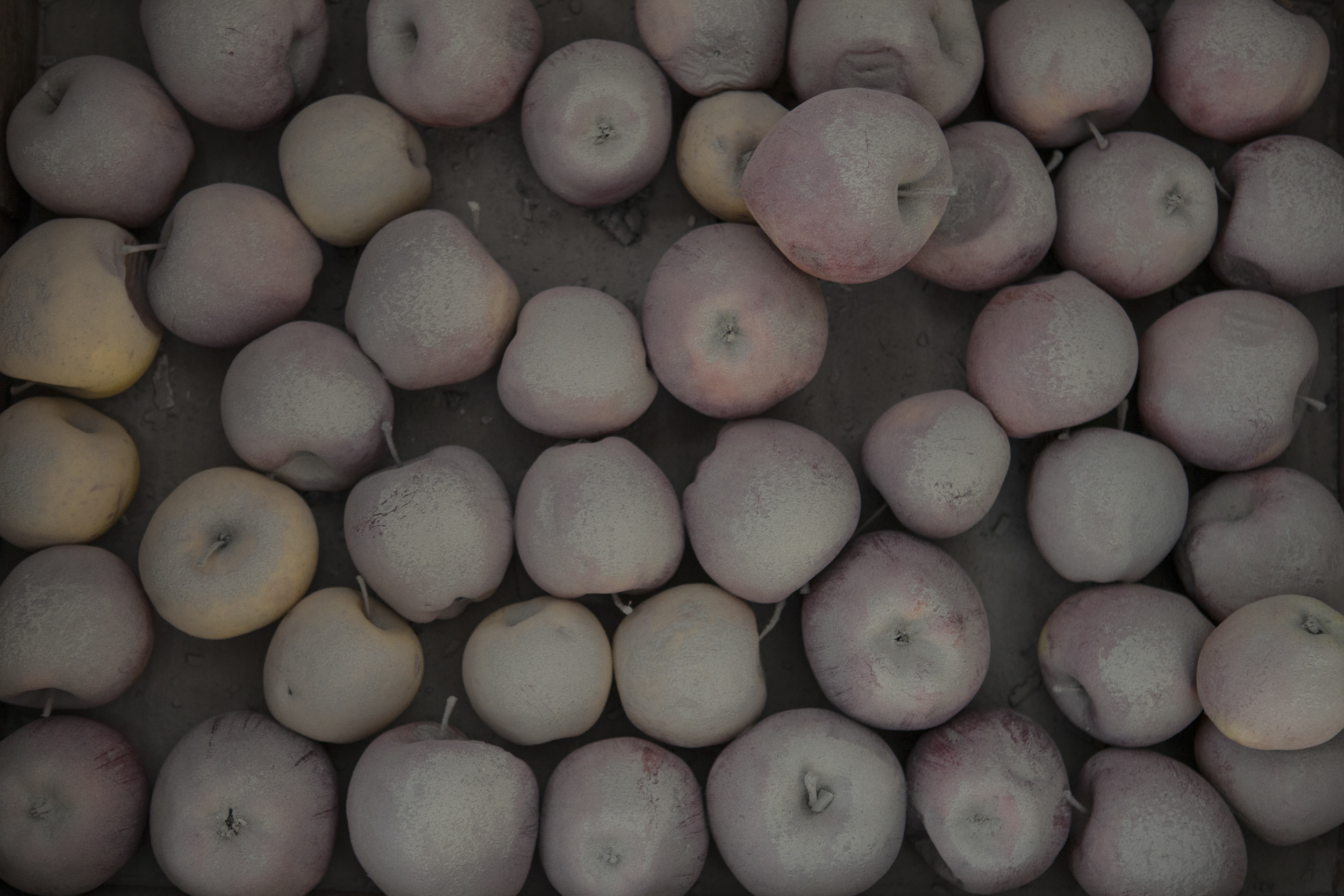
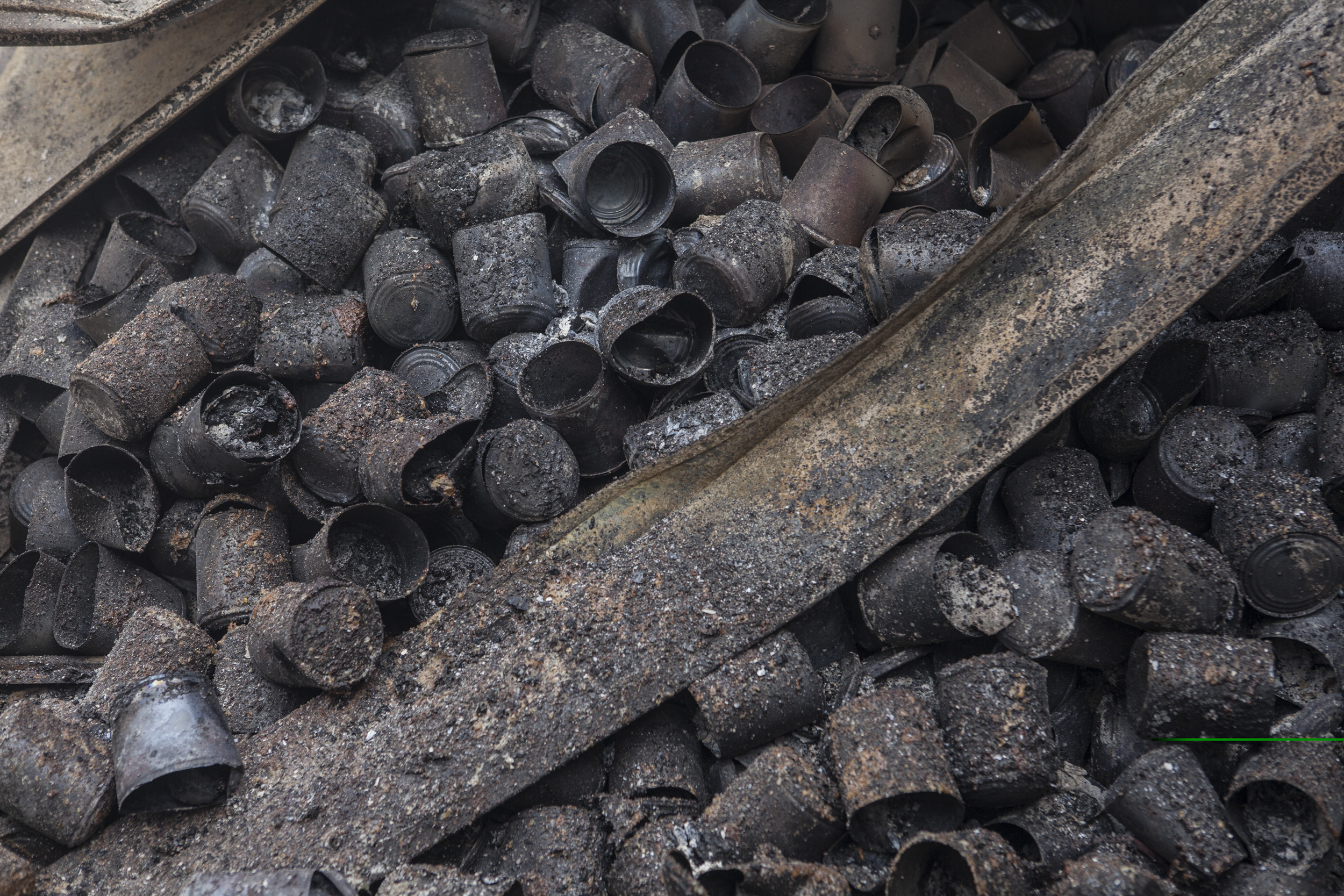
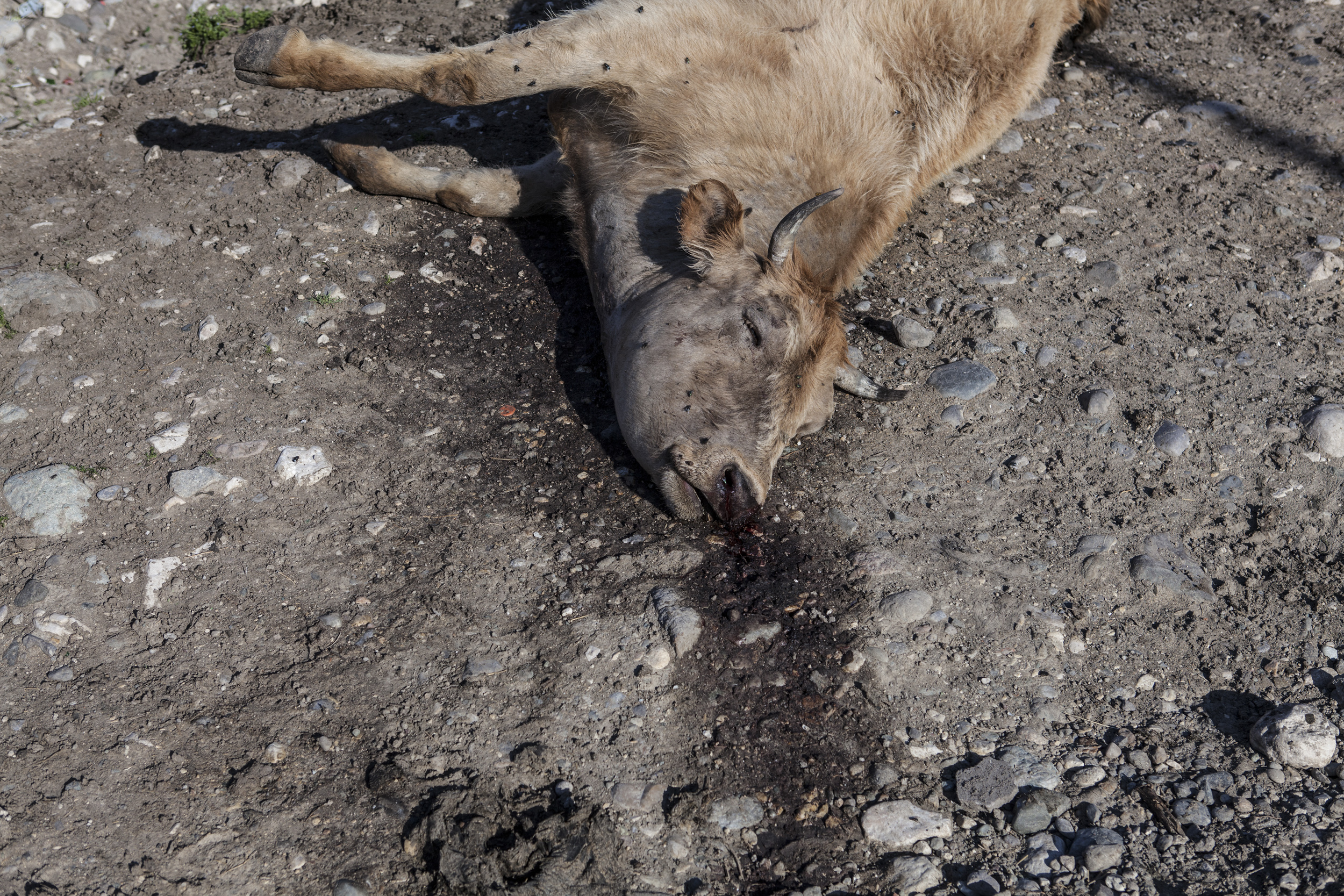
Many cattle killed during shelling in the village of Talish.
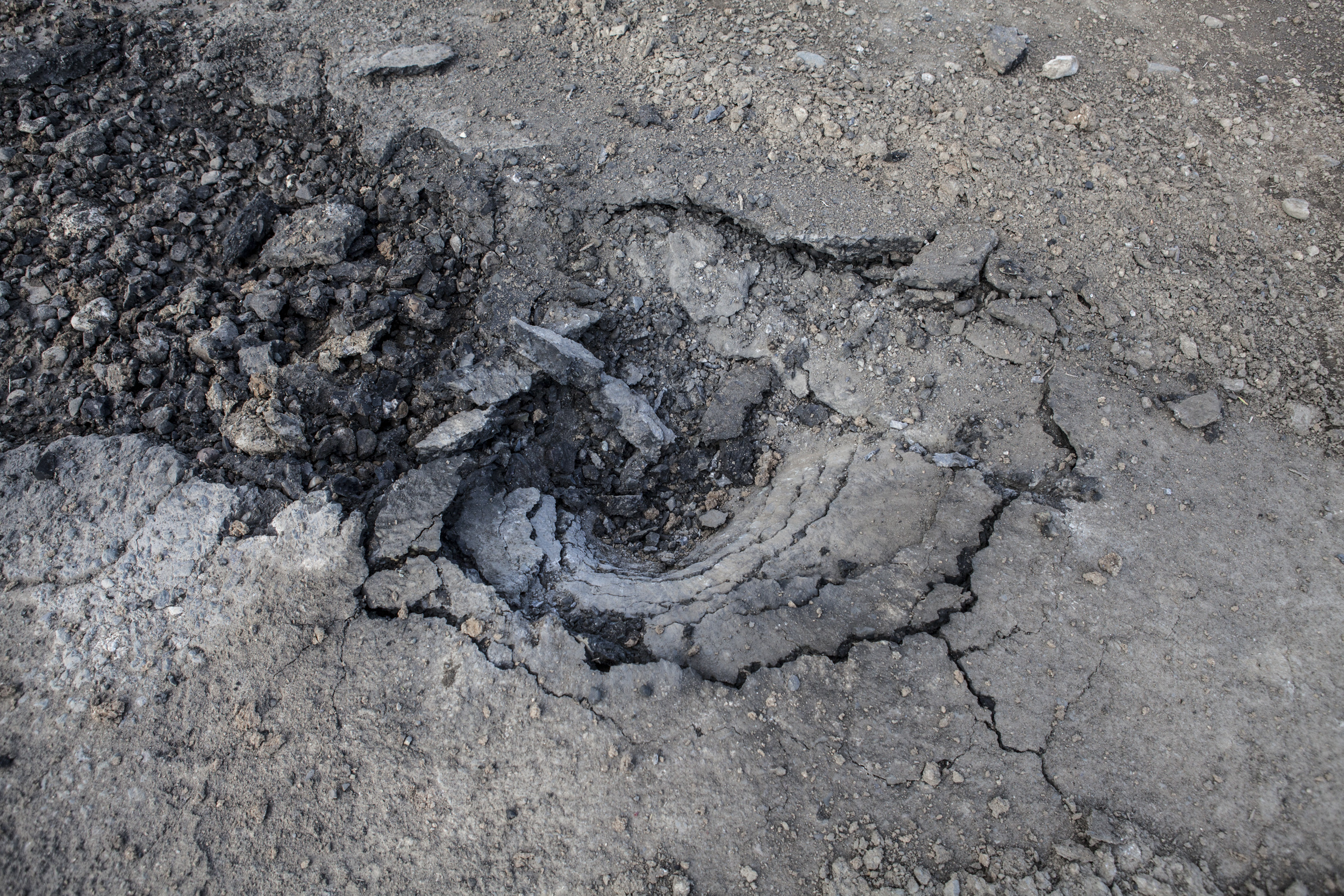
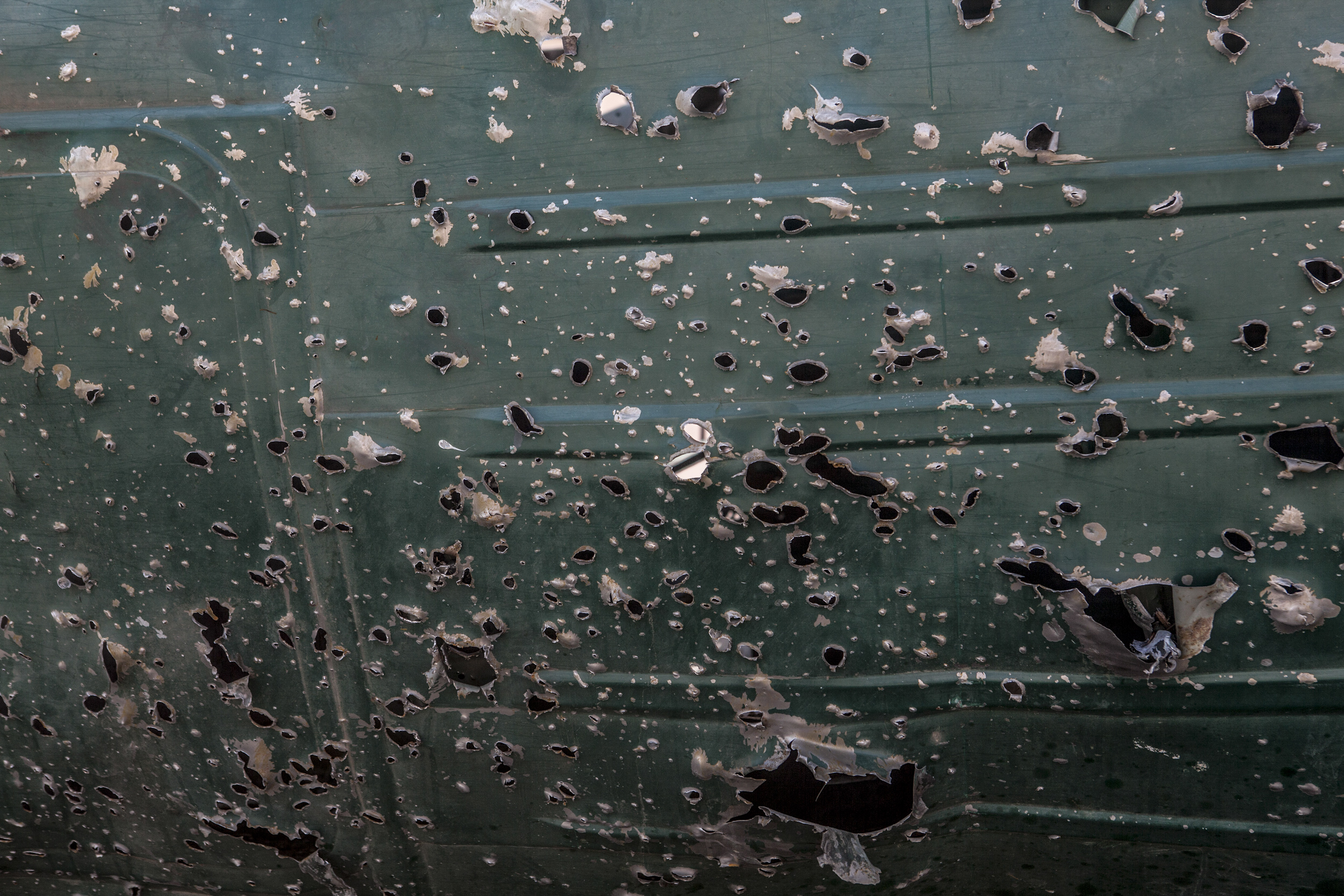
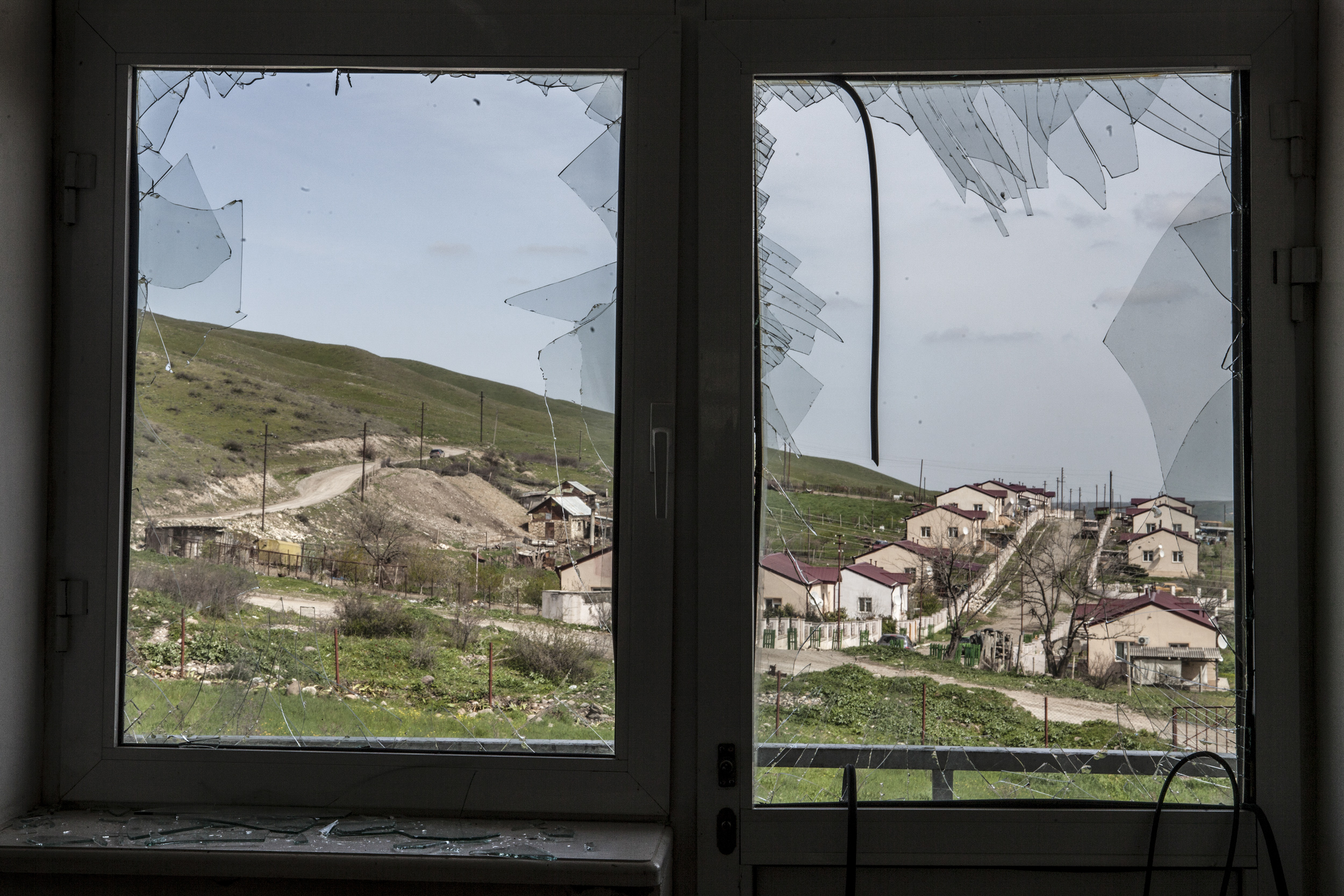
April 5- shattered windows of a school in the village of Mataghis where heavy shelling had taken place.
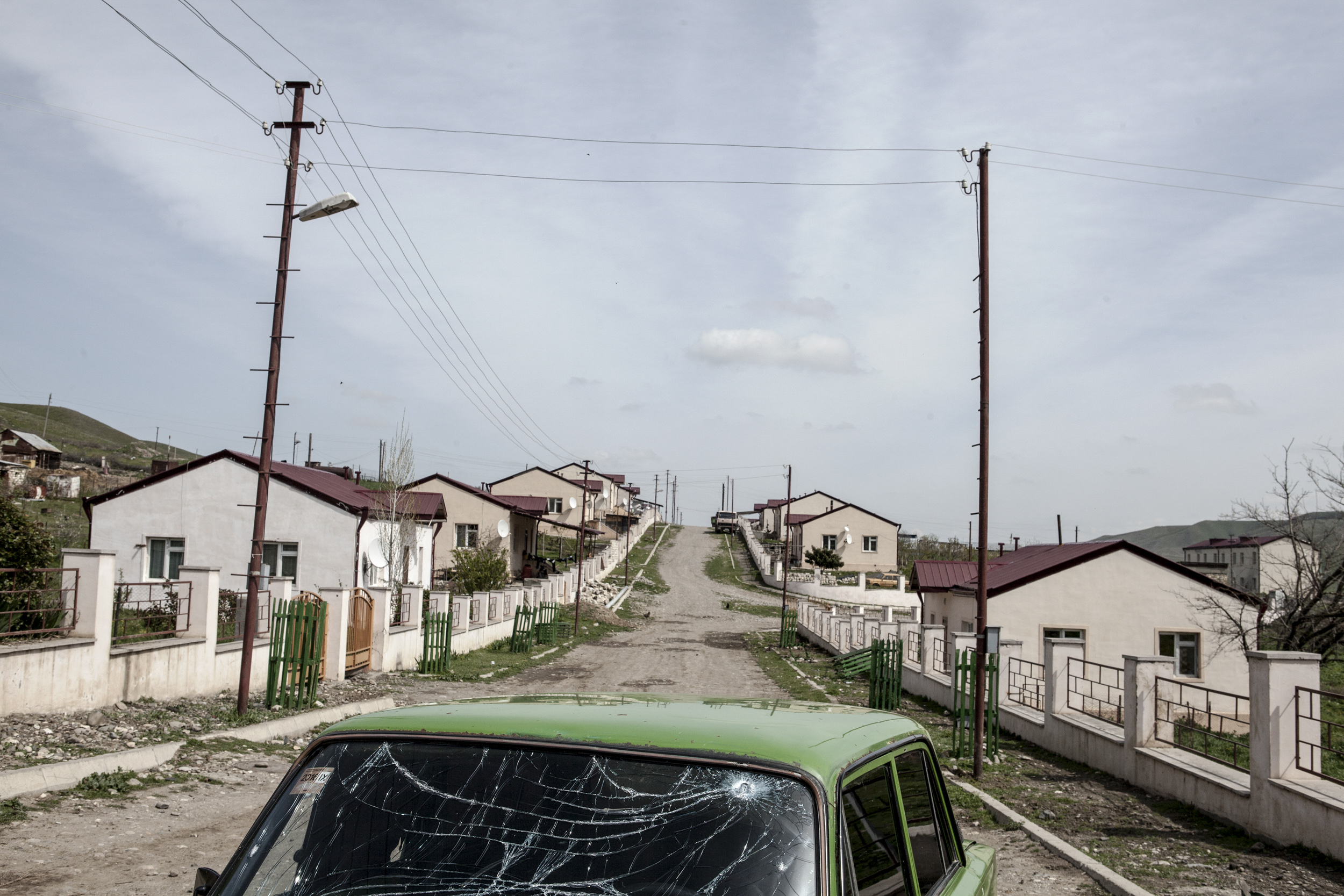
A road in the village of Mataghis with abandoned cars and houses shelled by Azerbaijani Army - April 5.
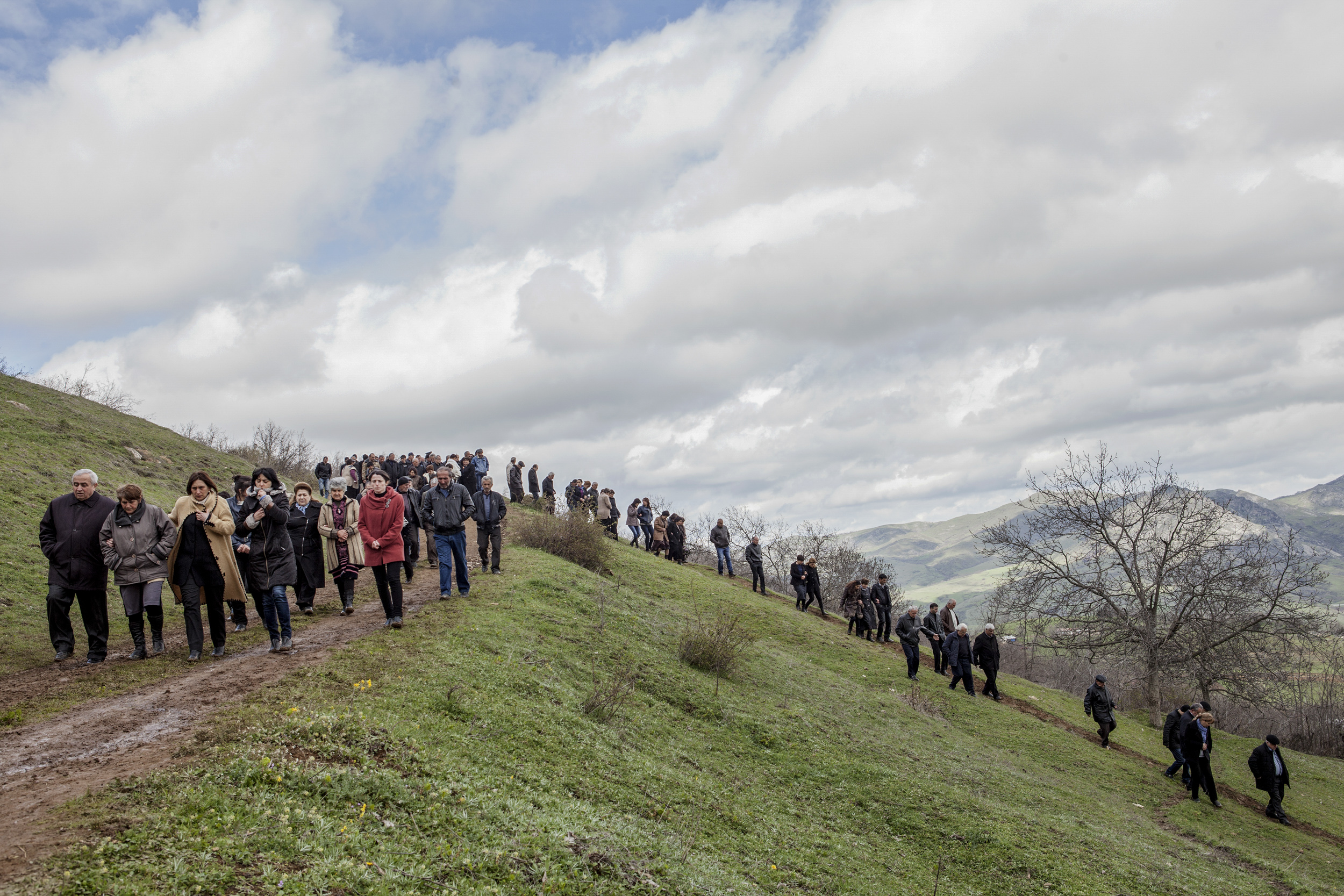
Locals of Herher village depart after funeral services for a boy killed on April 2 when Azeri Grad rockets hit their village during the first day of fighting.
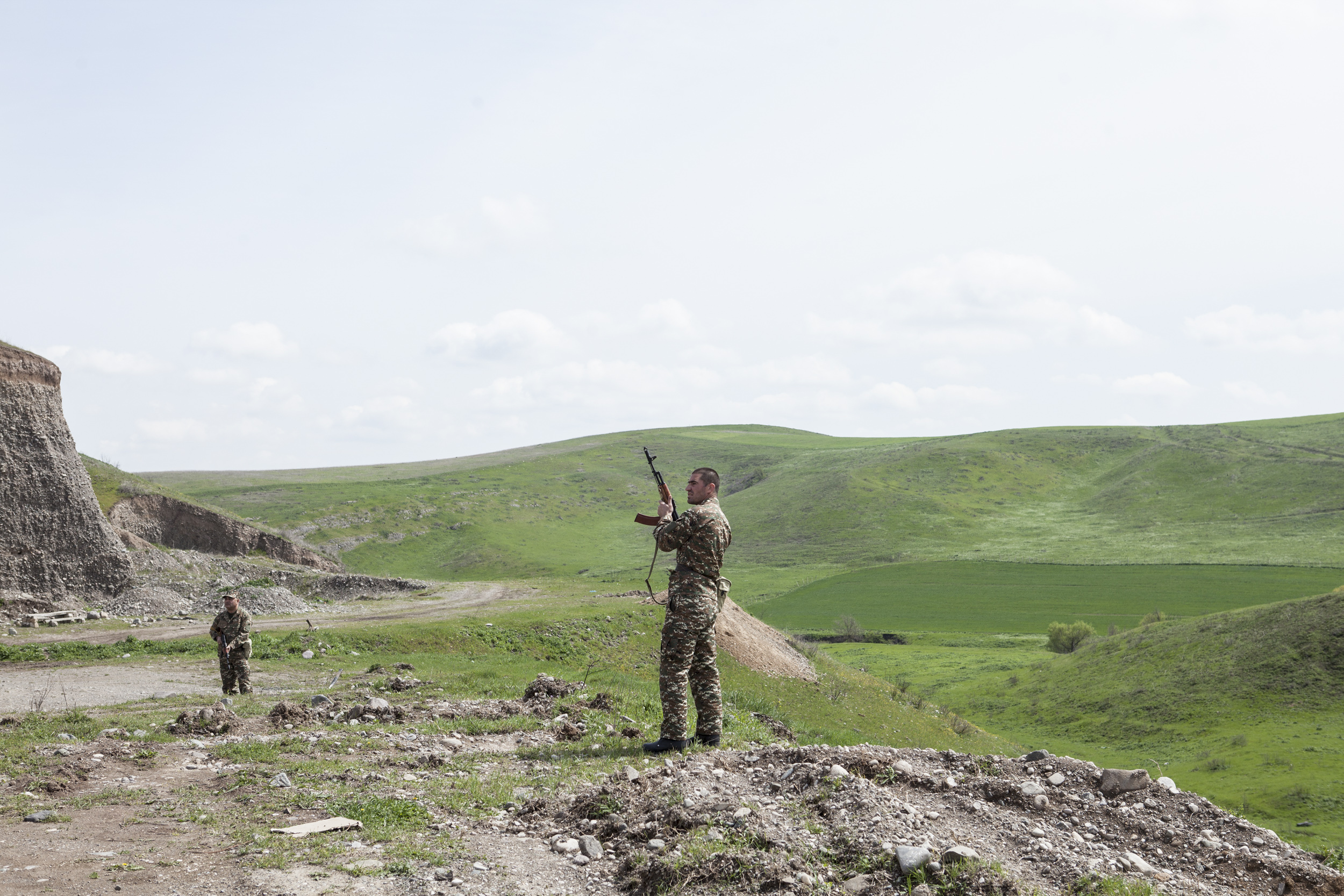
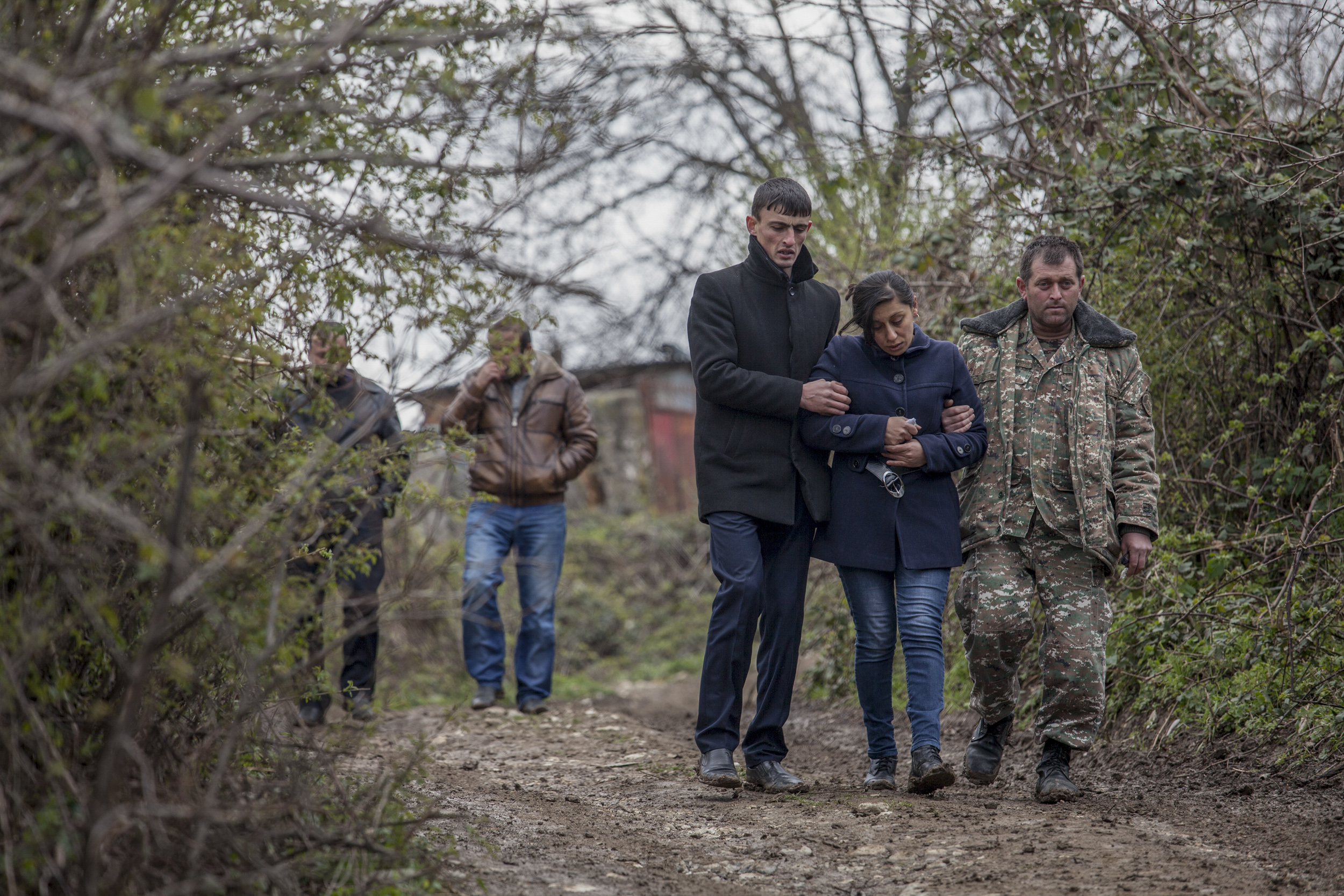
The mother of 12-year-old Vagharshak Grigoryan is escorted by her husband, right, after the boys funeral. The boy was killed when Azeri Grad rockets hit their village during the first day of fighting on April 2.
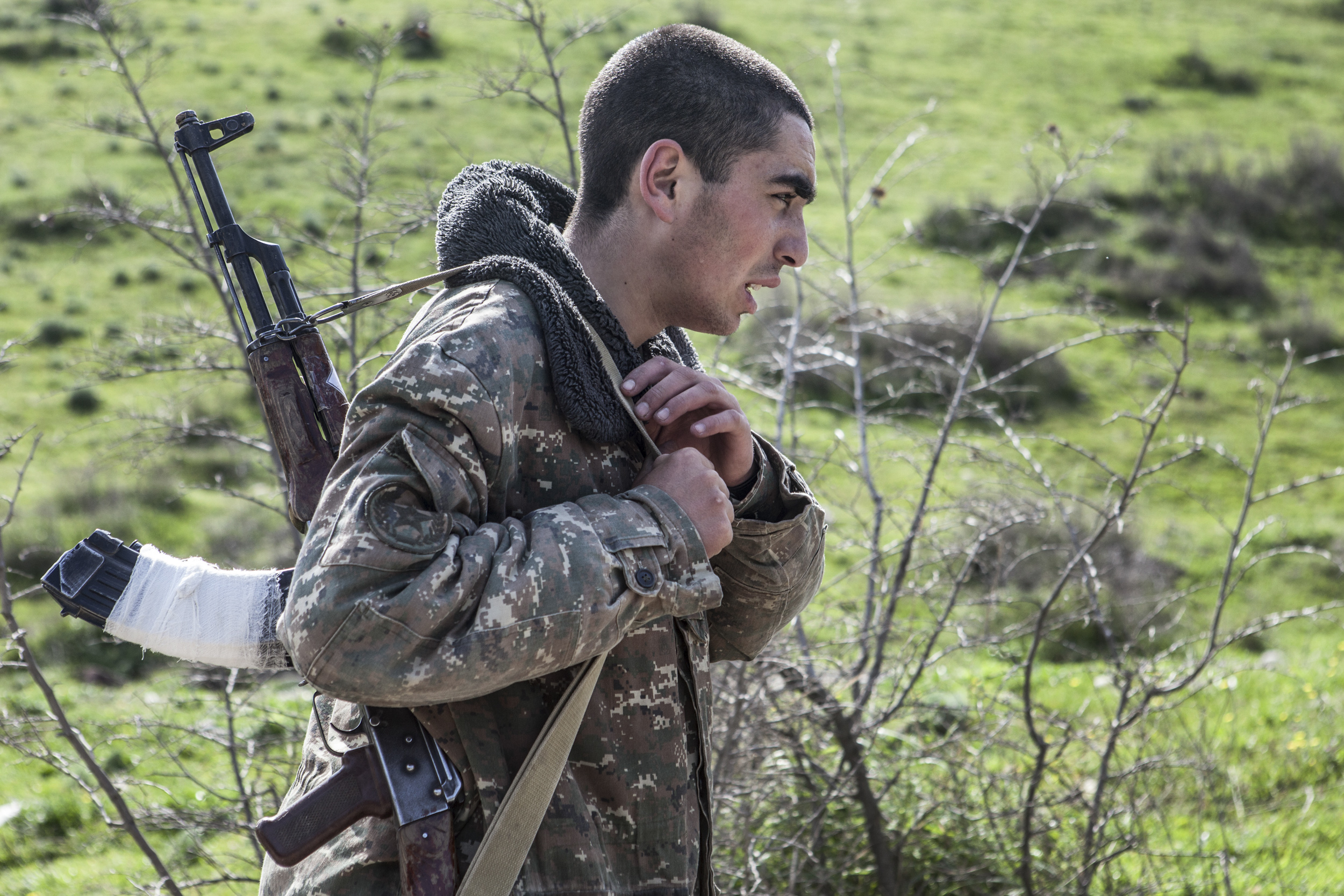
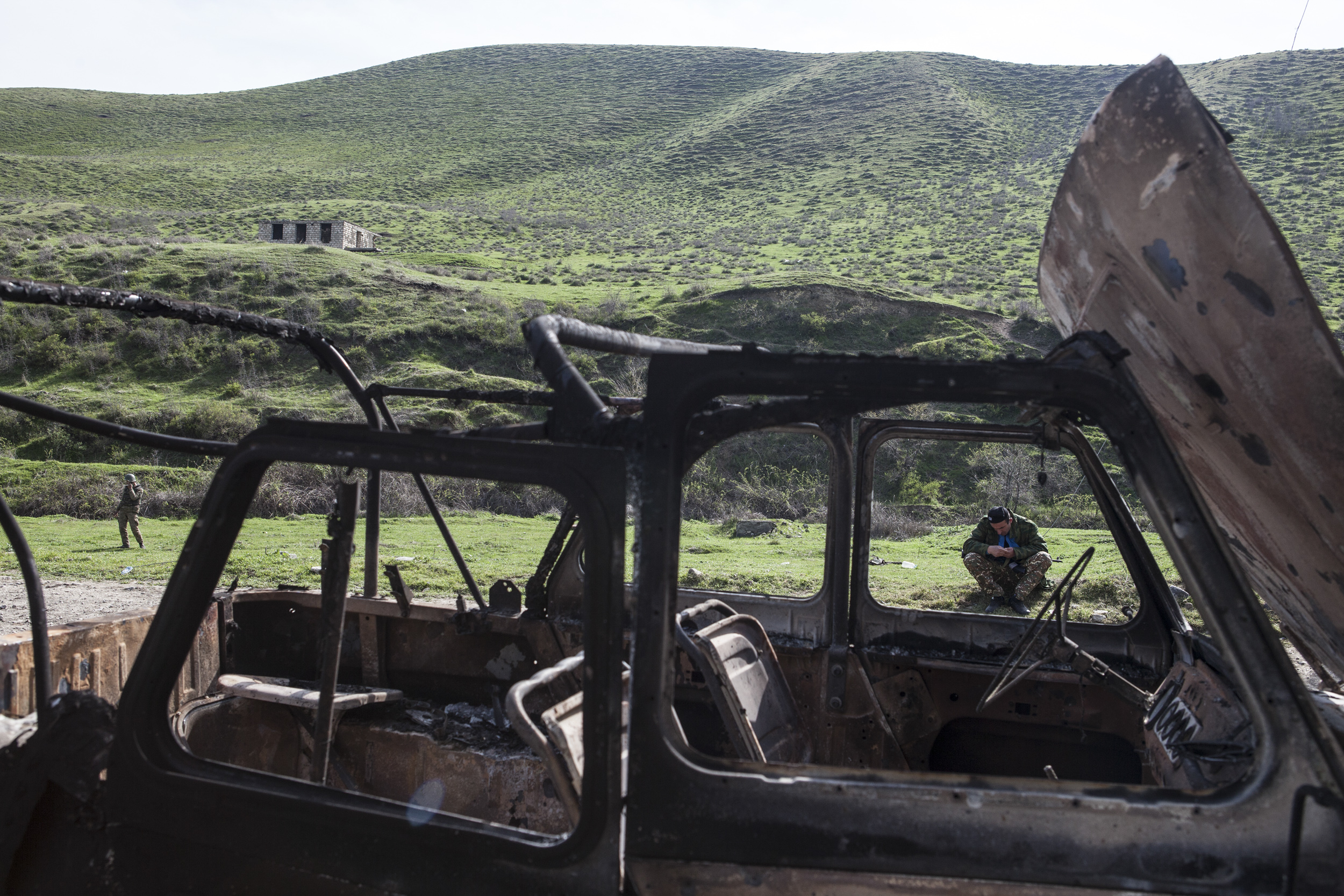
April 5 - a shelled vehicle on a road where a number of Armenian volunteer soldiers were killed the night before.
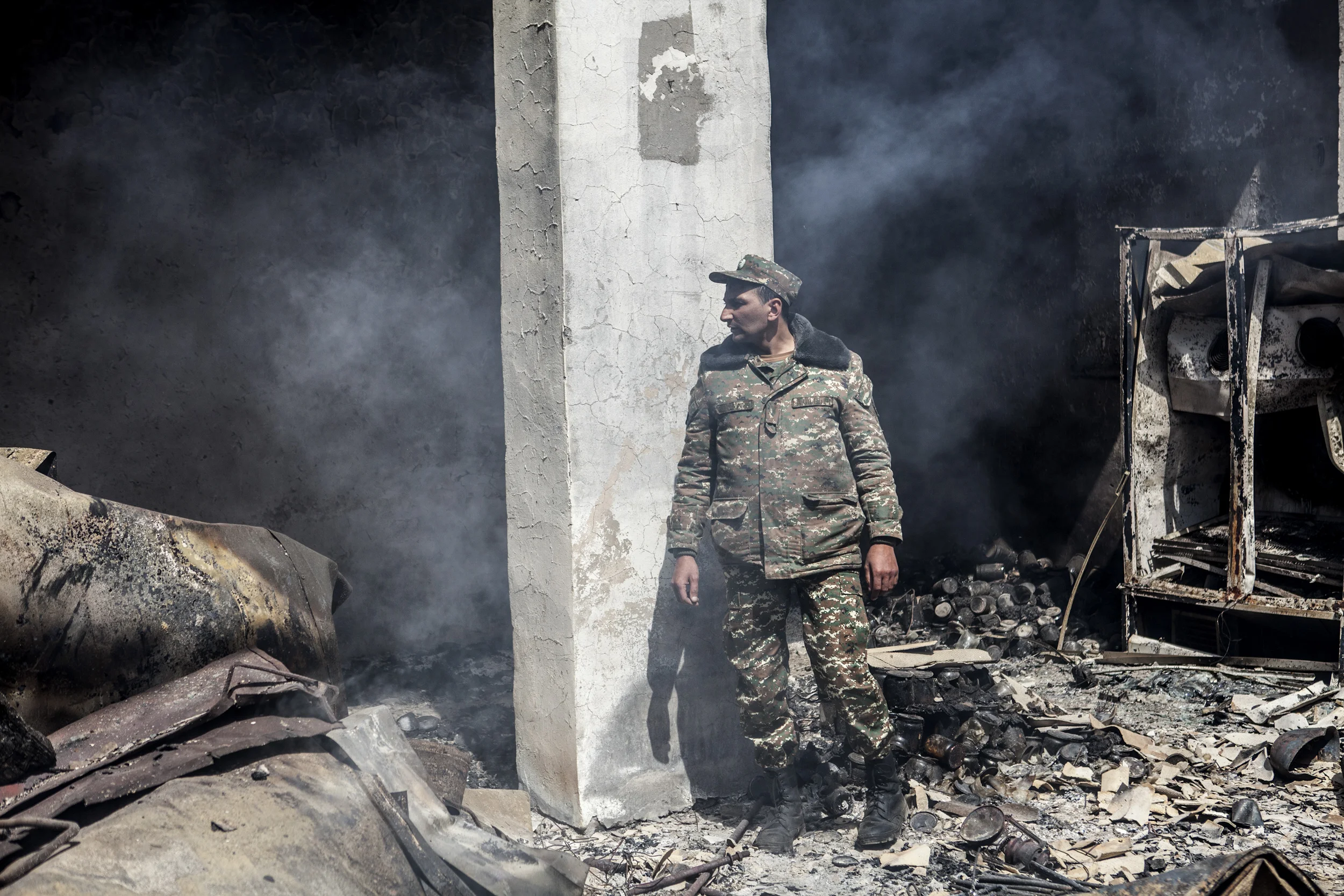
April 5 - an Armenian servicemen in a recently hit building on a base in Mataghis.
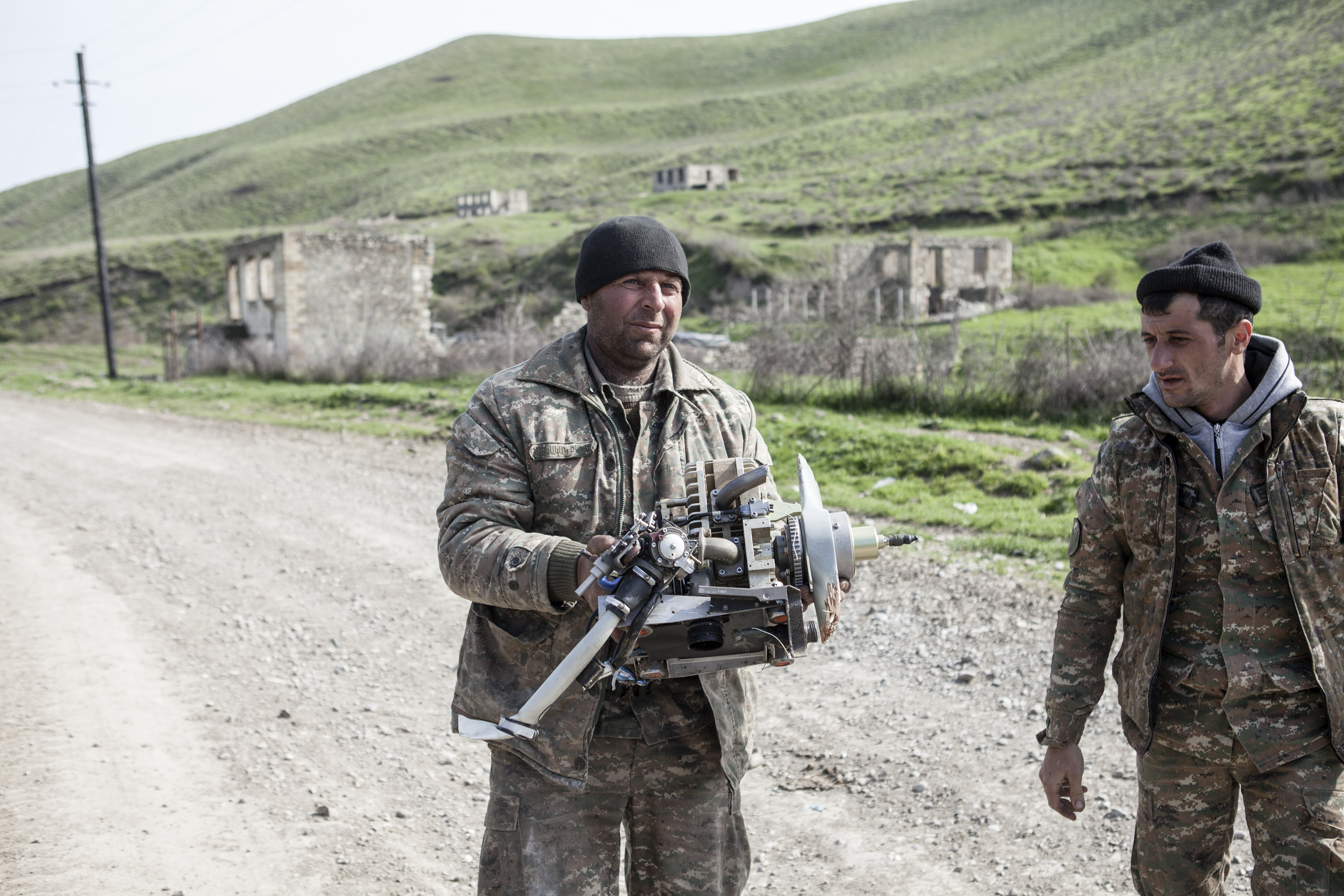
April 5 - an Israeli-made drone recovered after it was shot down by Armenian soldiers in the village of Talish on the Northern border of Nagorno-Karabakh.
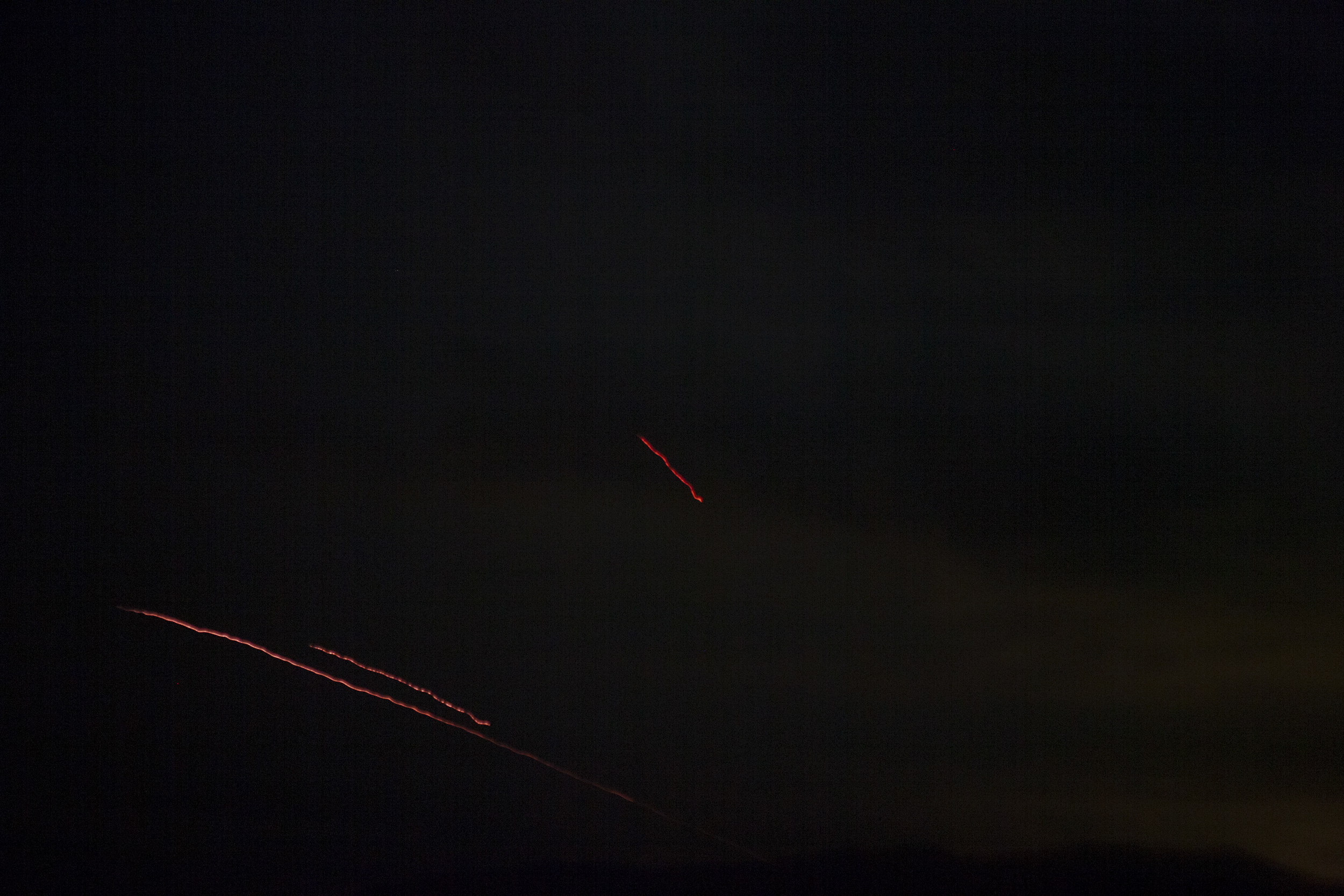
Tracers fired at Azerbaijani drones on April 4.
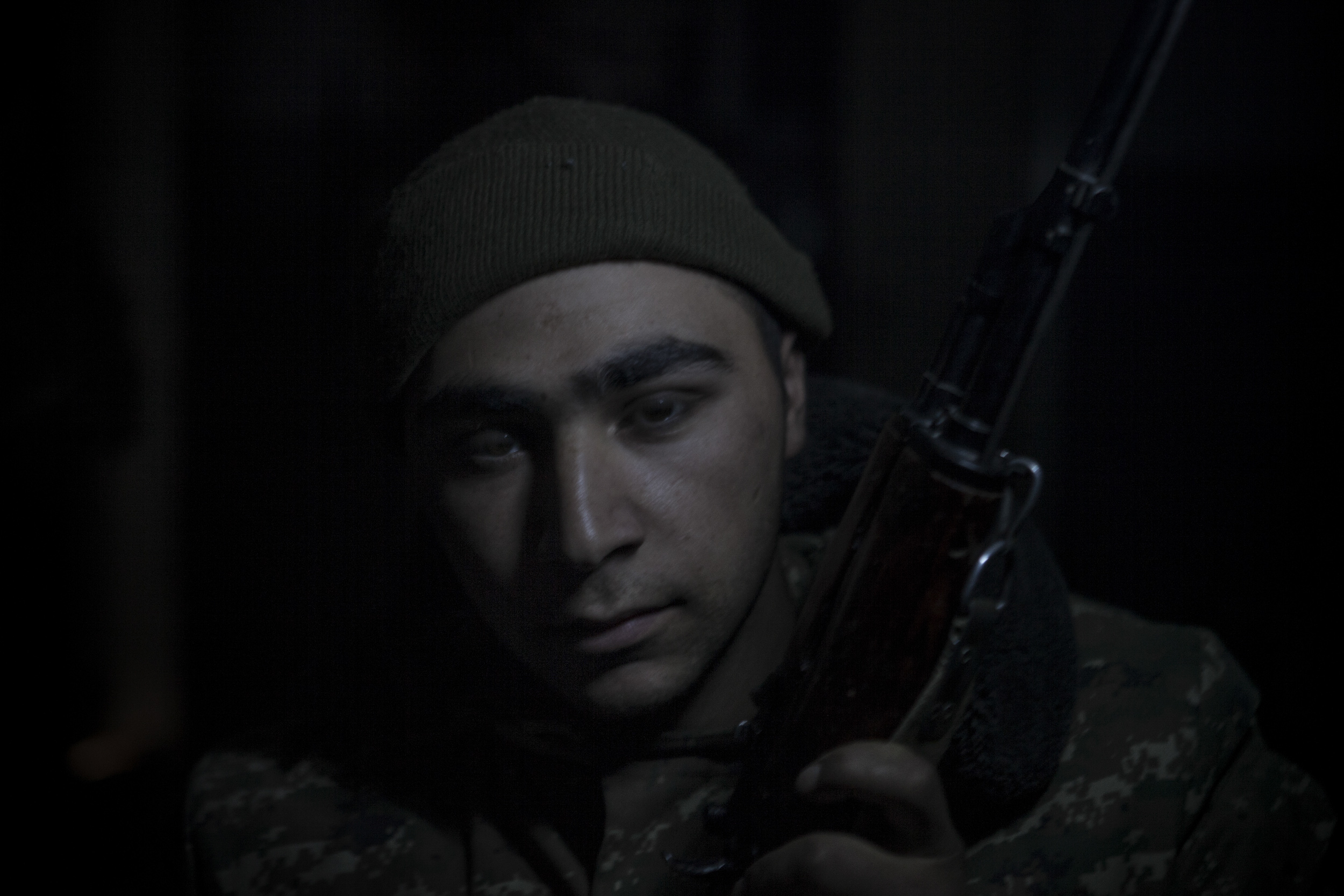
Soldiers awaiting orders in darkness, lit only by kerosene lanterns, at a military base in Mataghis, Karabakh on April 5.
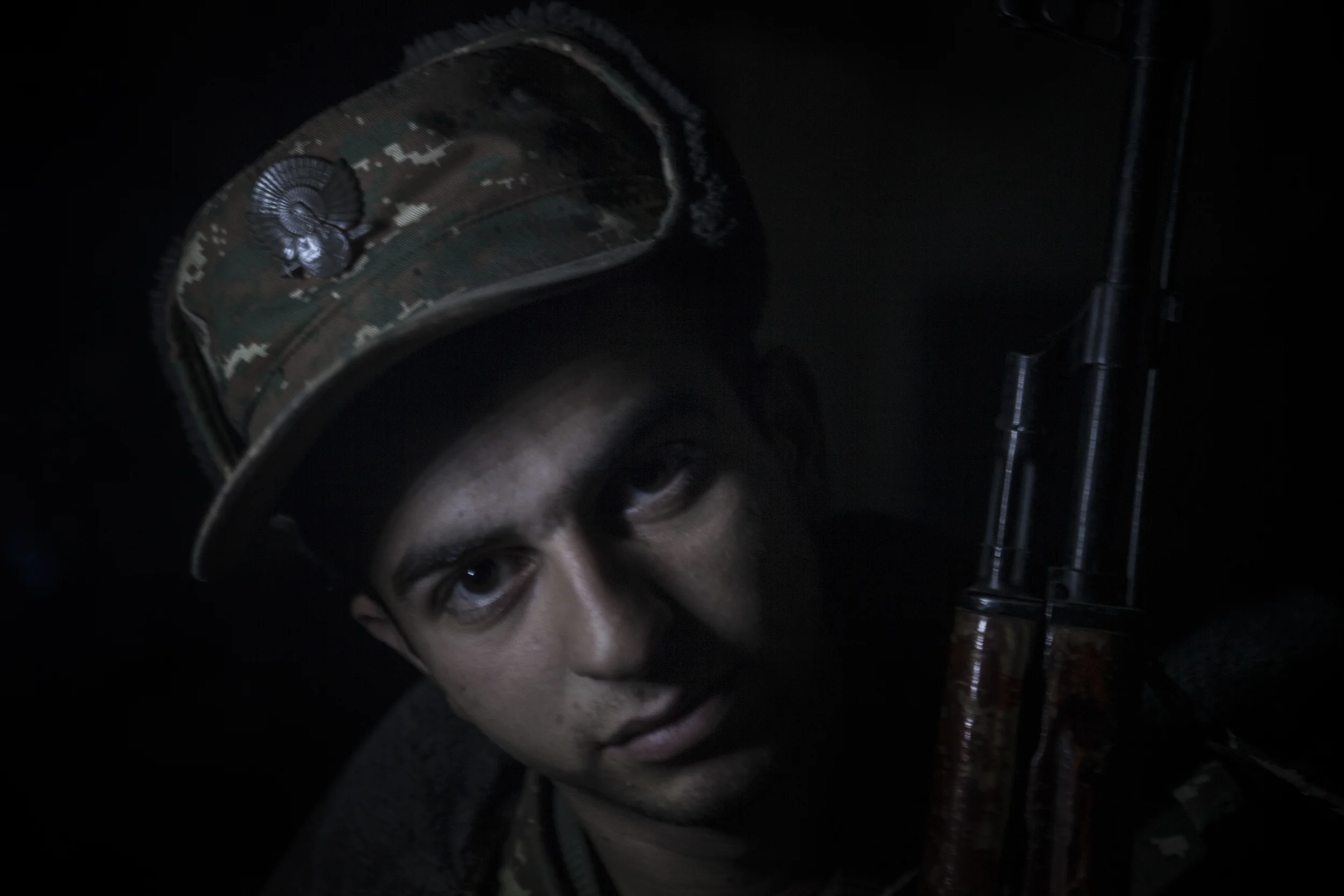
Soldiers awaiting orders in darkness, lit only by kerosene lanterns, at a military base in Mataghis, Karabakh on April 5.
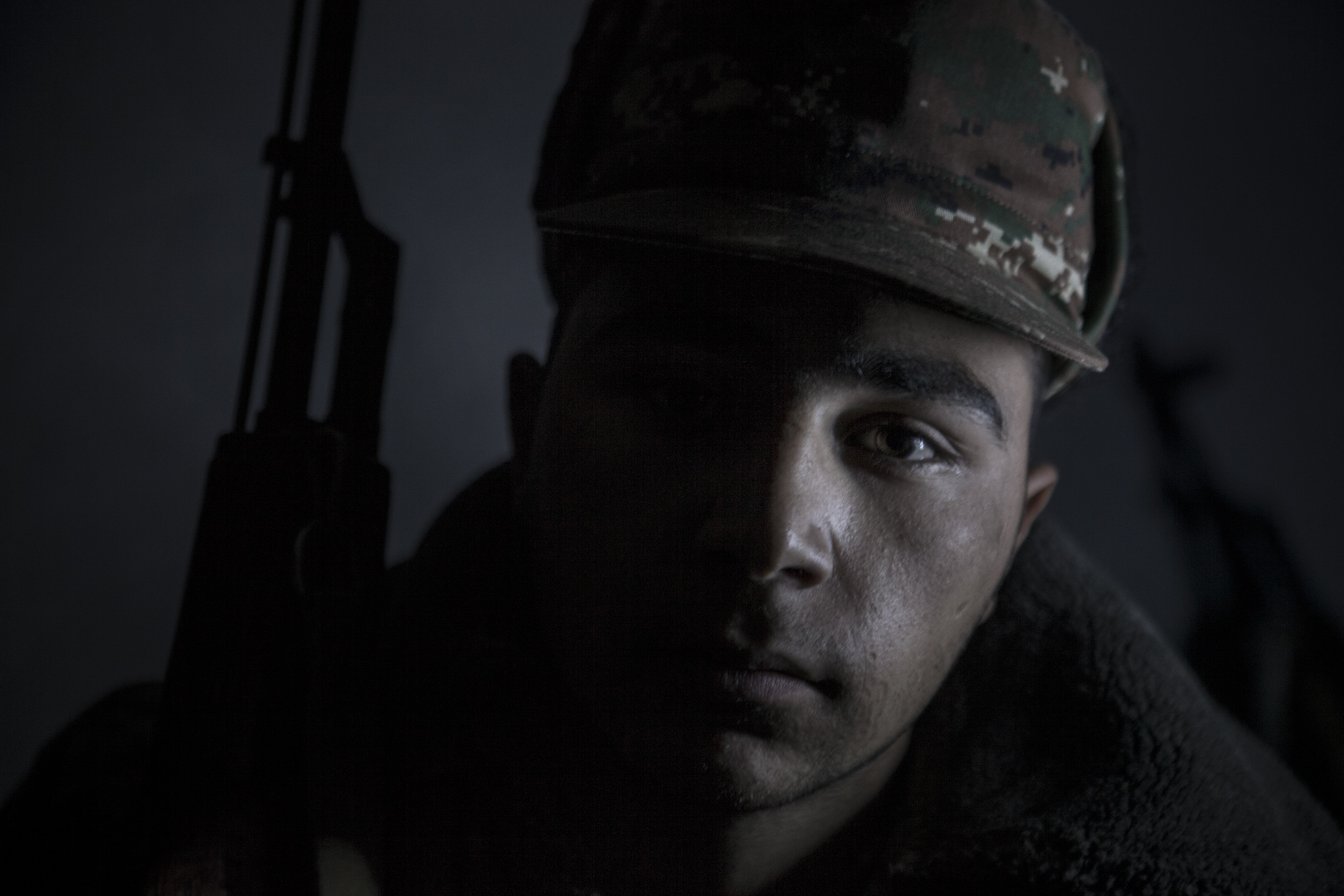
Soldiers awaiting orders in darkness, lit only by kerosene lanterns, at a military base in Mataghis, Karabakh on April 5.
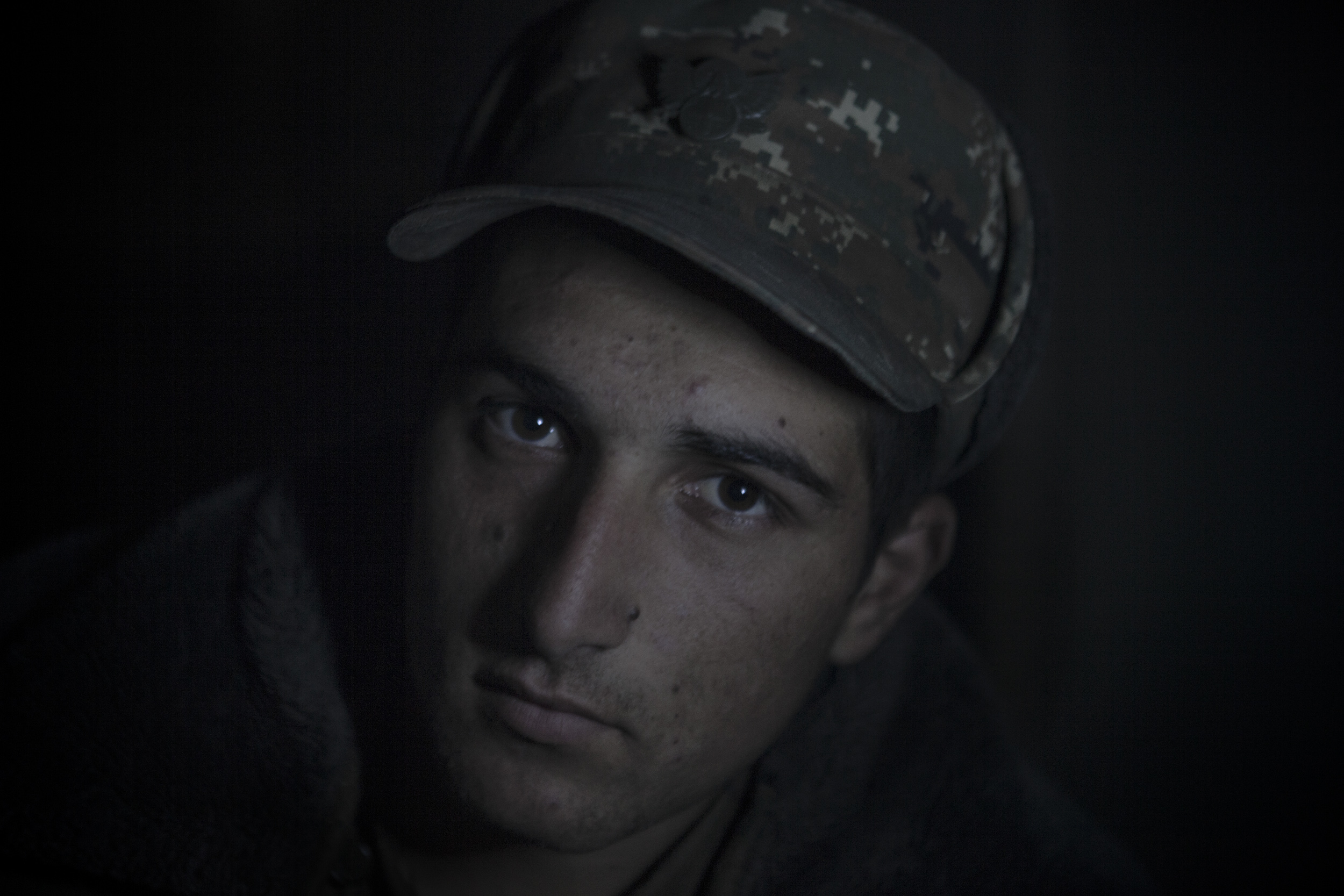
Soldiers awaiting orders in darkness, lit only by kerosene lanterns, at a military base in Mataghis, Karabakh on April 5.
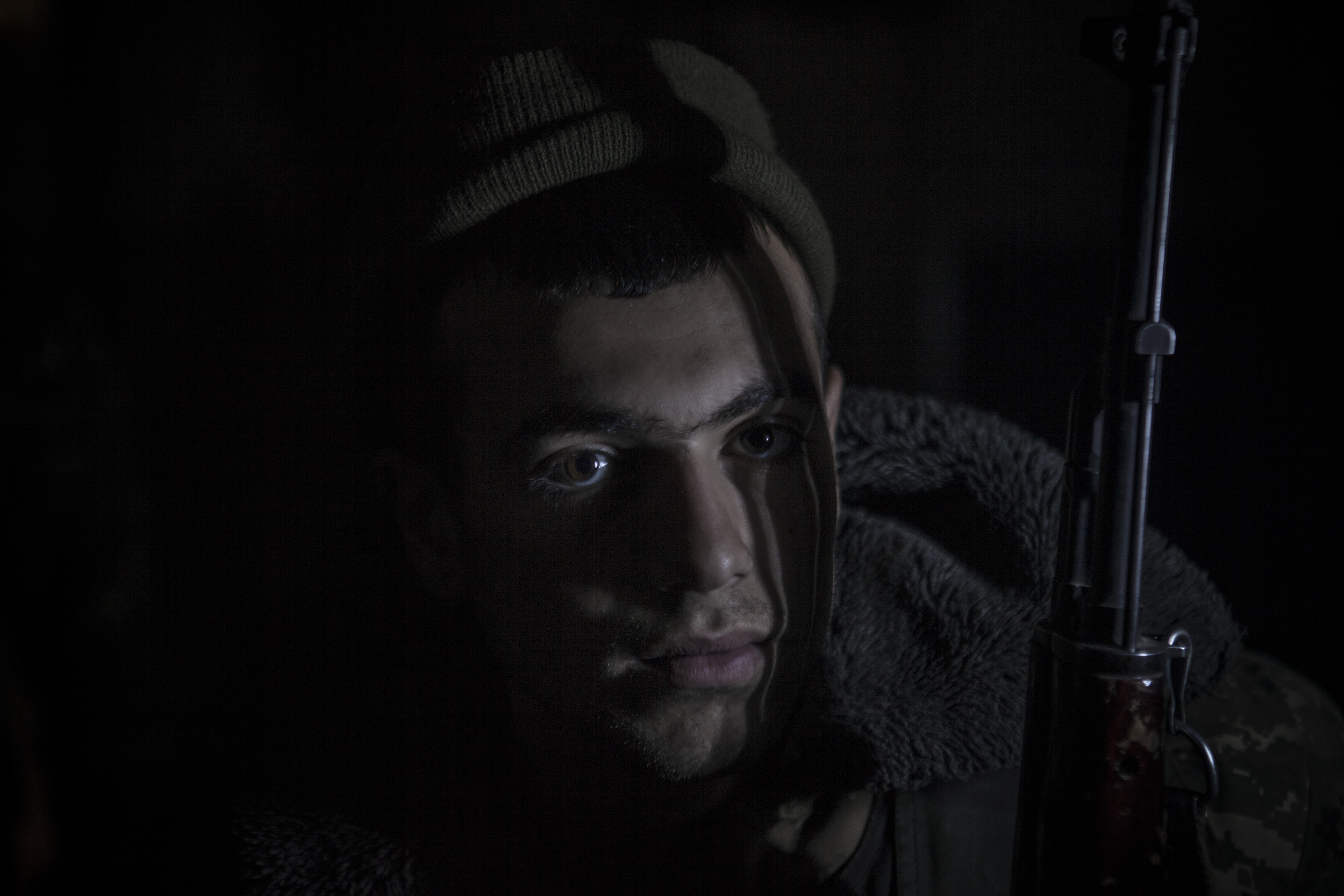
Soldiers awaiting orders in darkness, lit only by kerosene lanterns, at a military base in Mataghis, Karabakh on April 5.
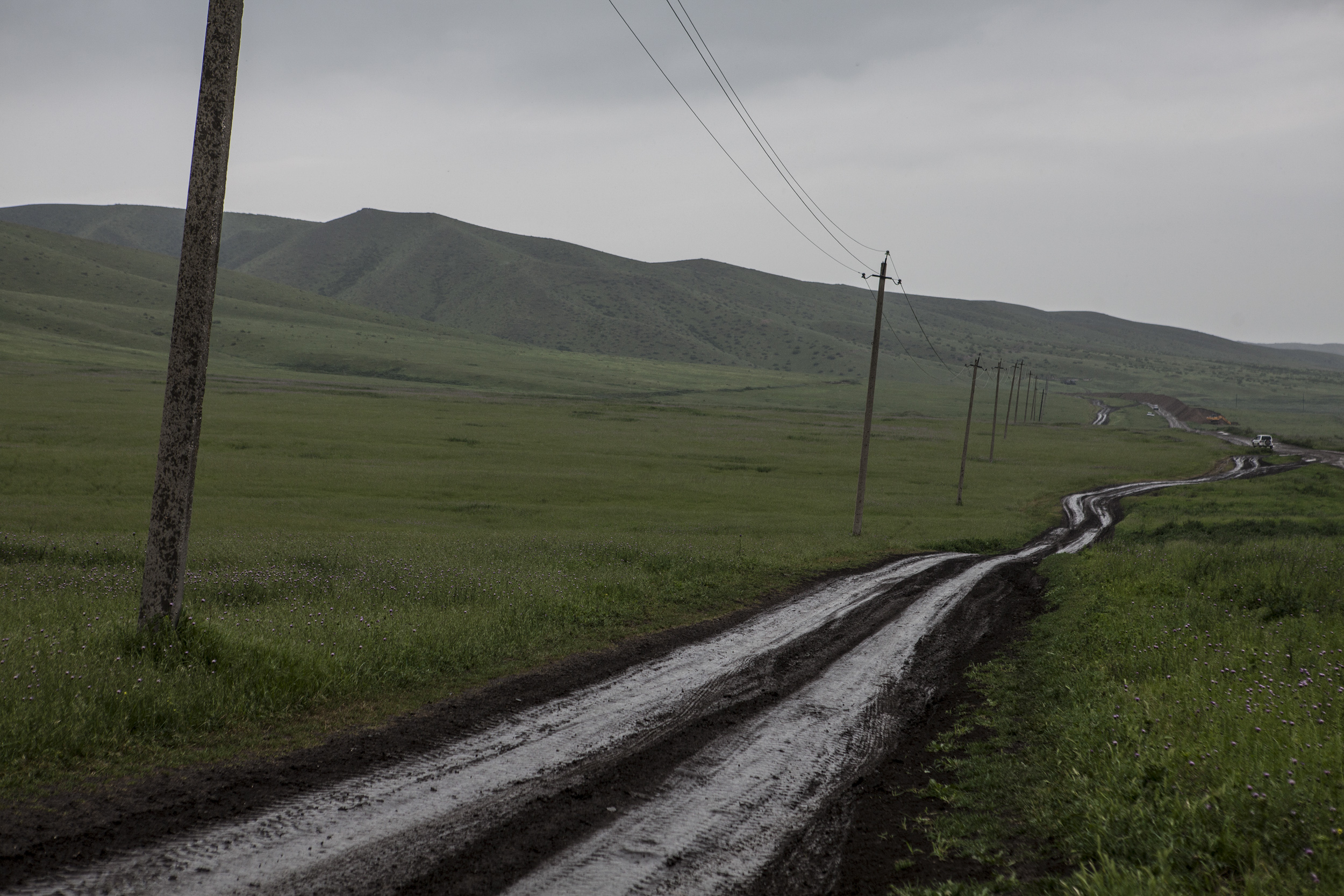
The remainder of this gallery are photographs from April 30; the northern borders of the Republic of Nagorno Karabakh where soldiers remain to protect.
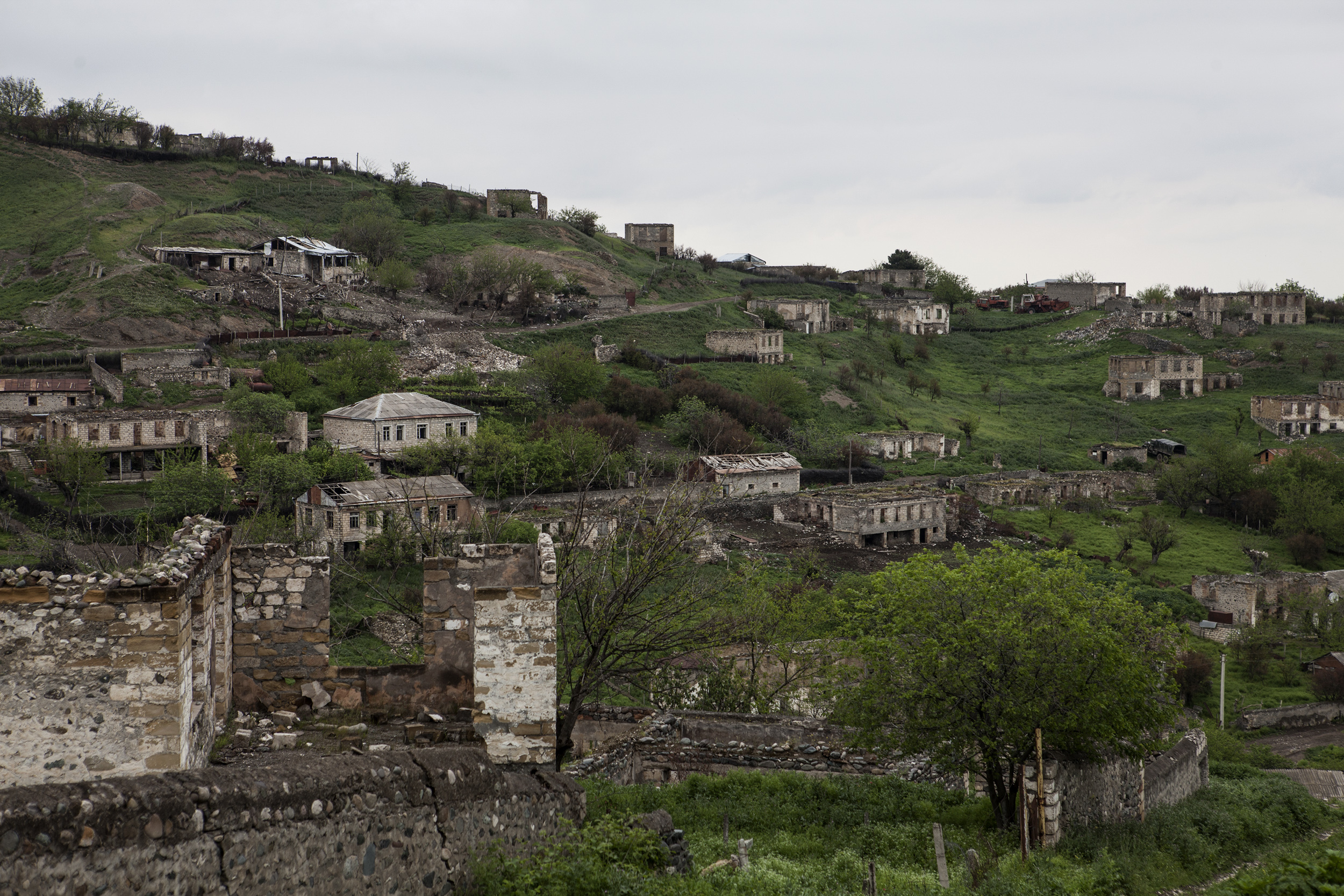
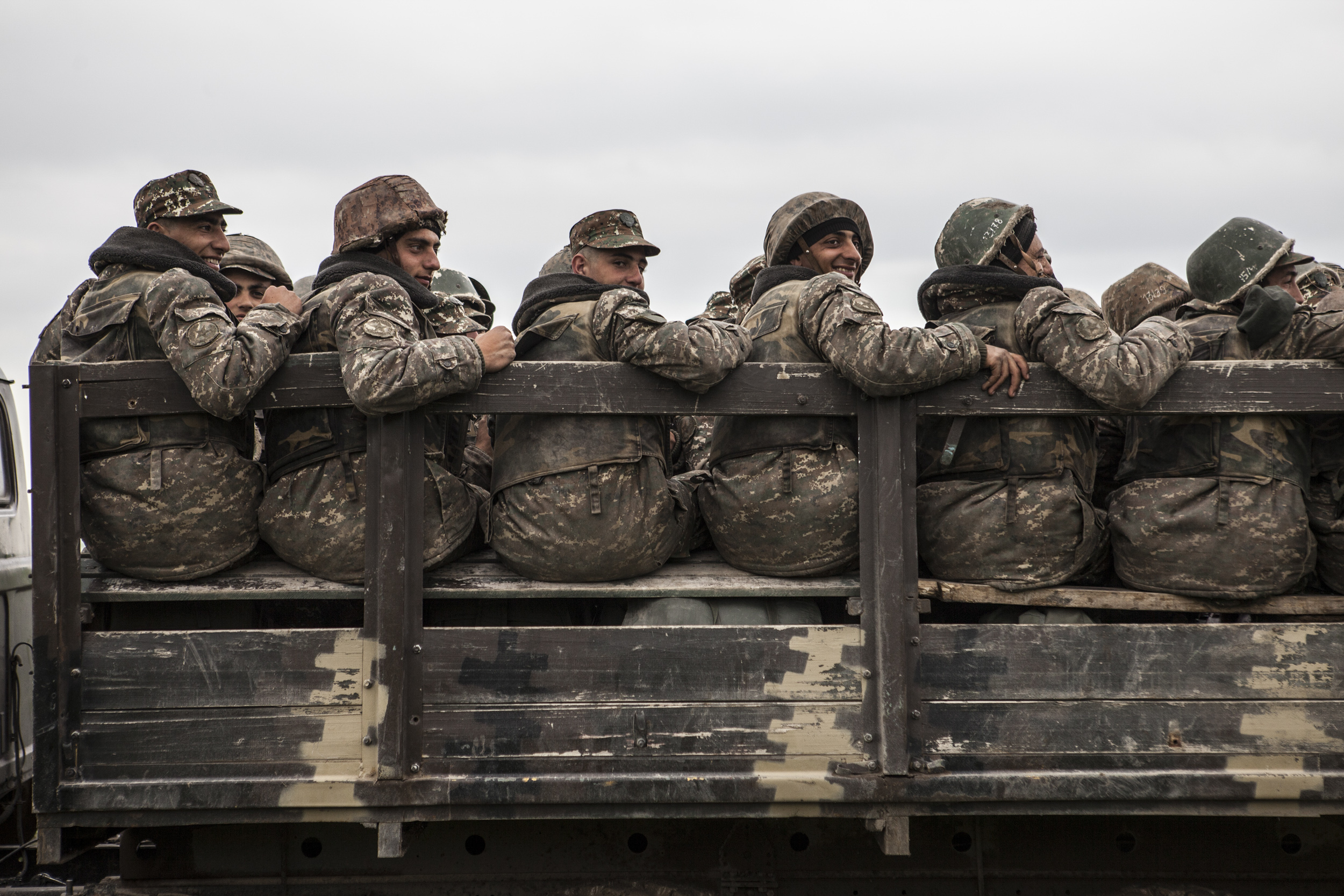
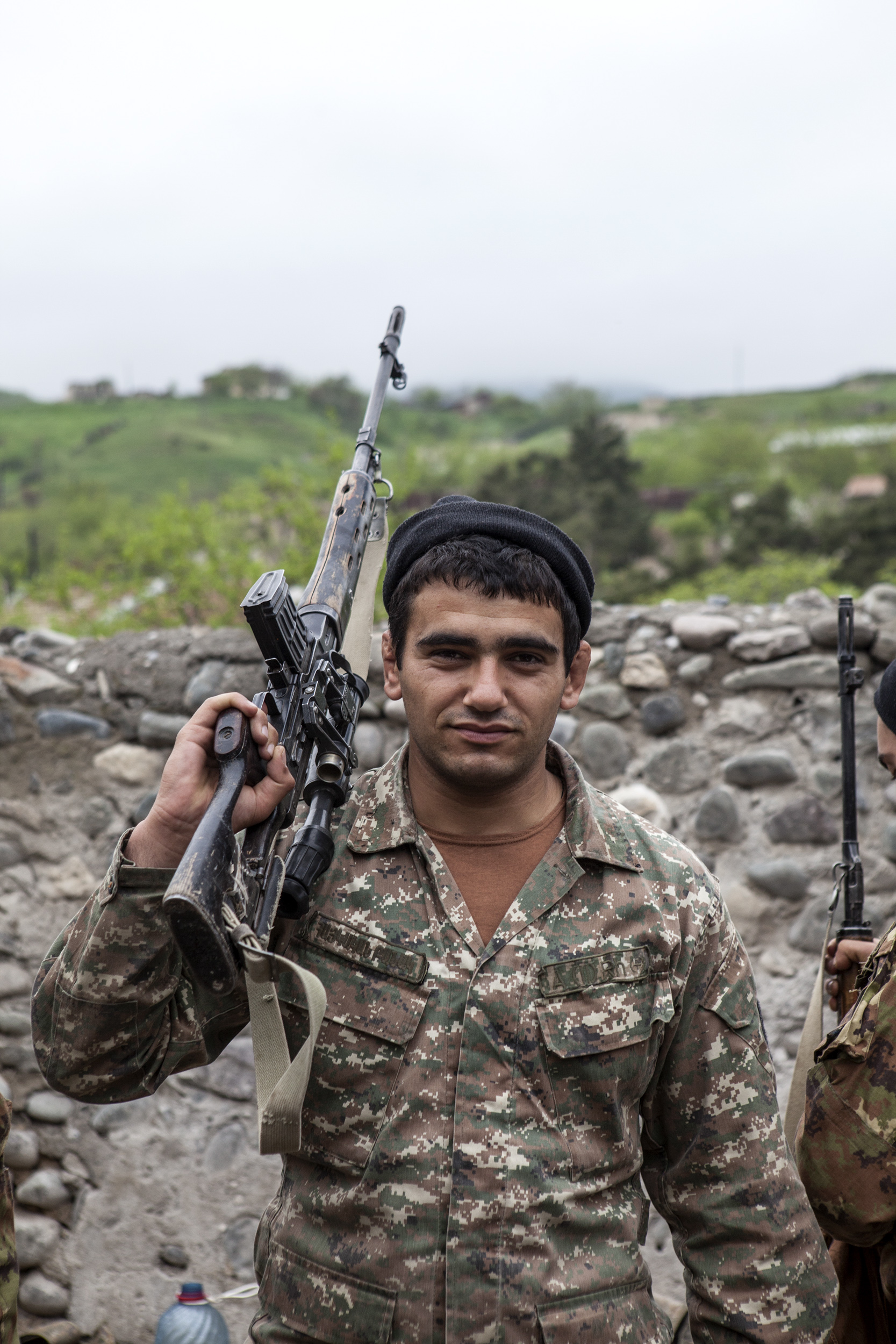
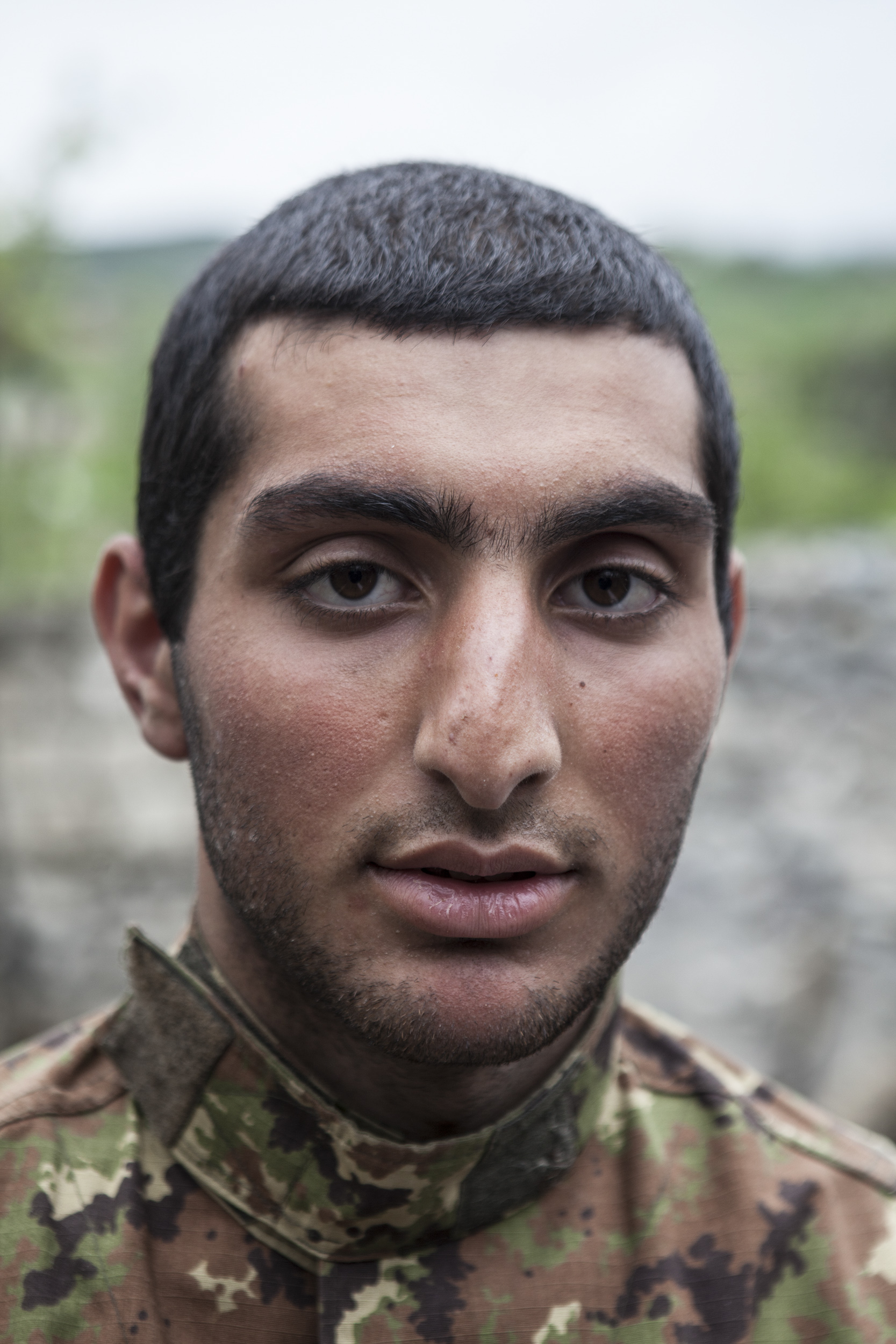
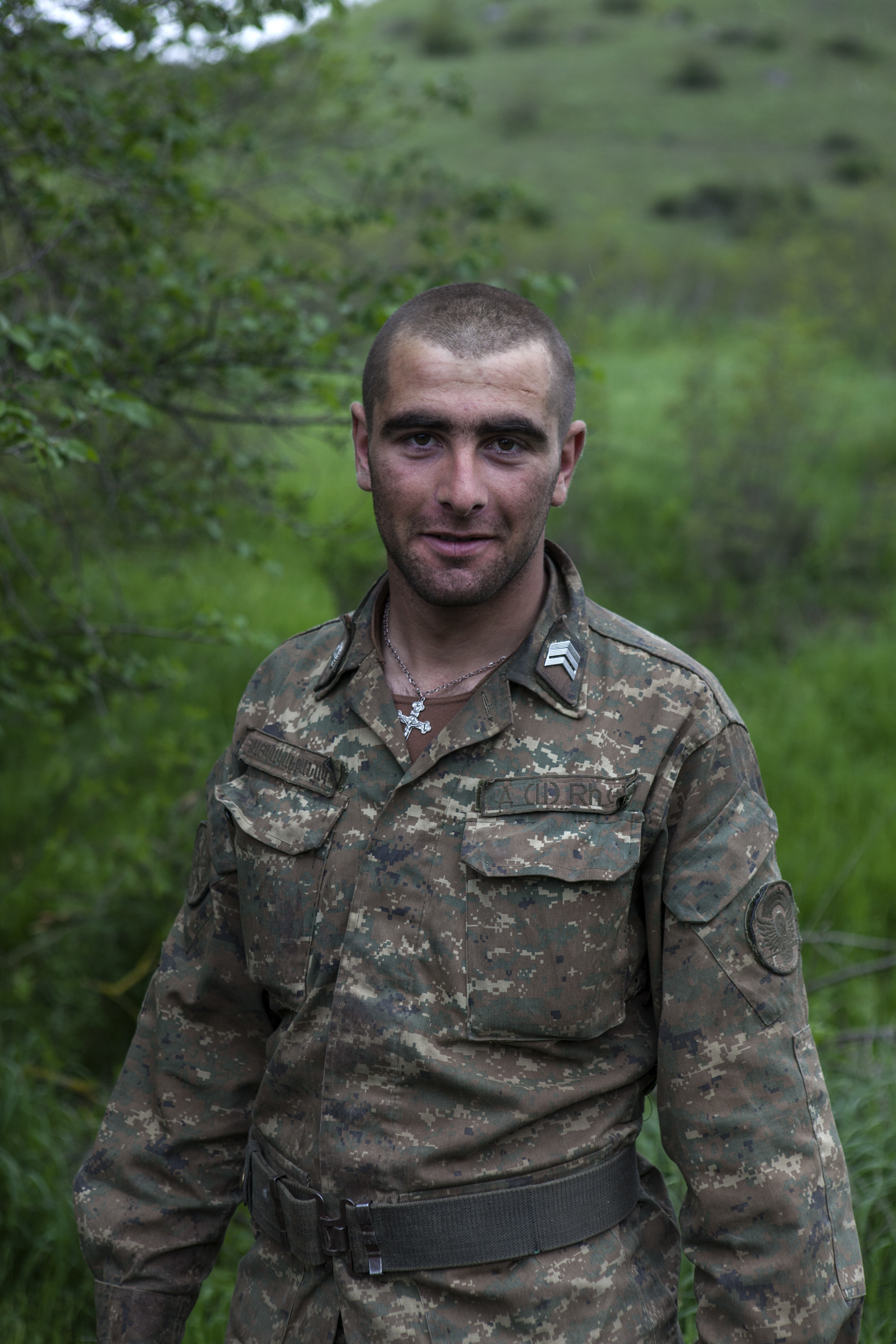

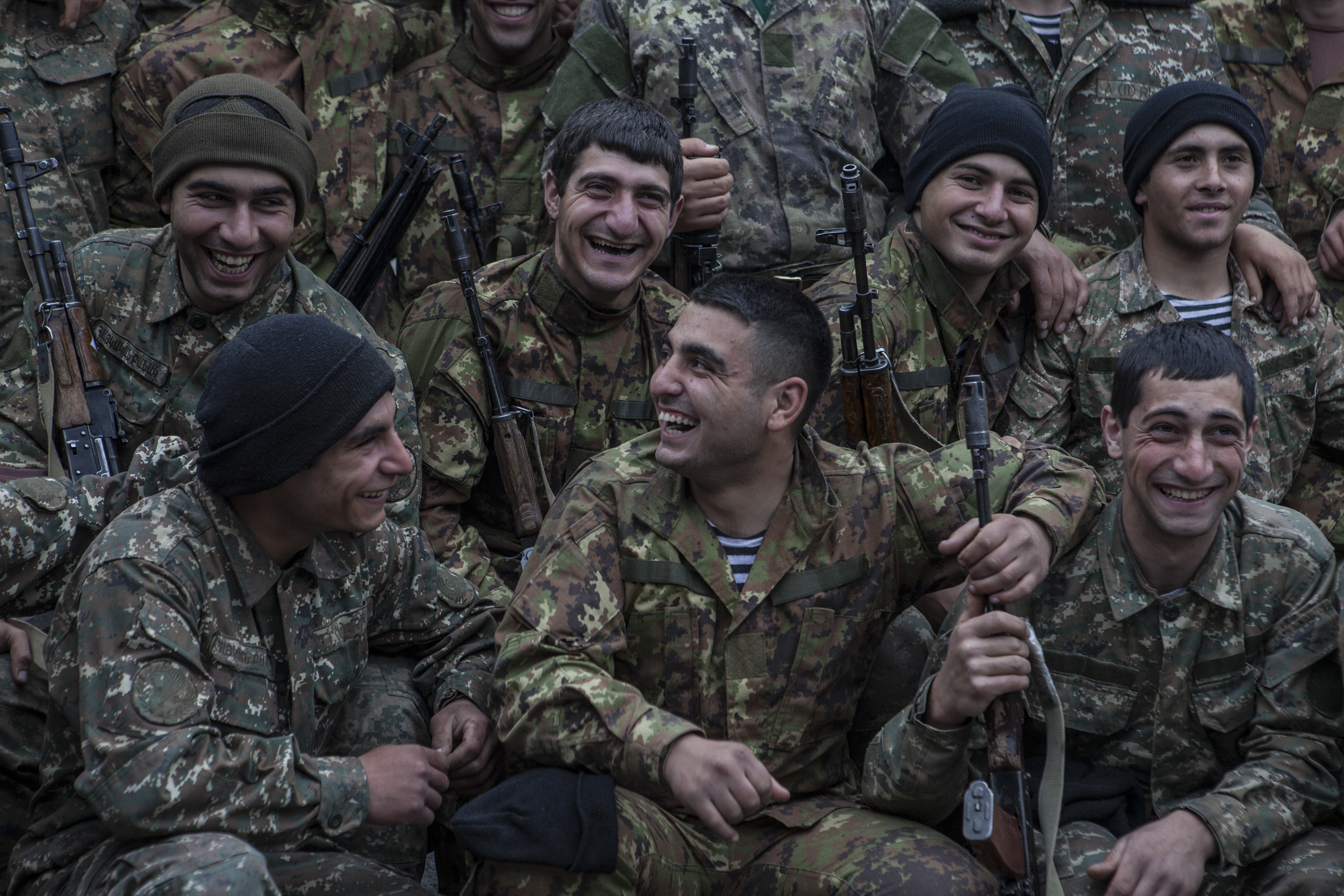
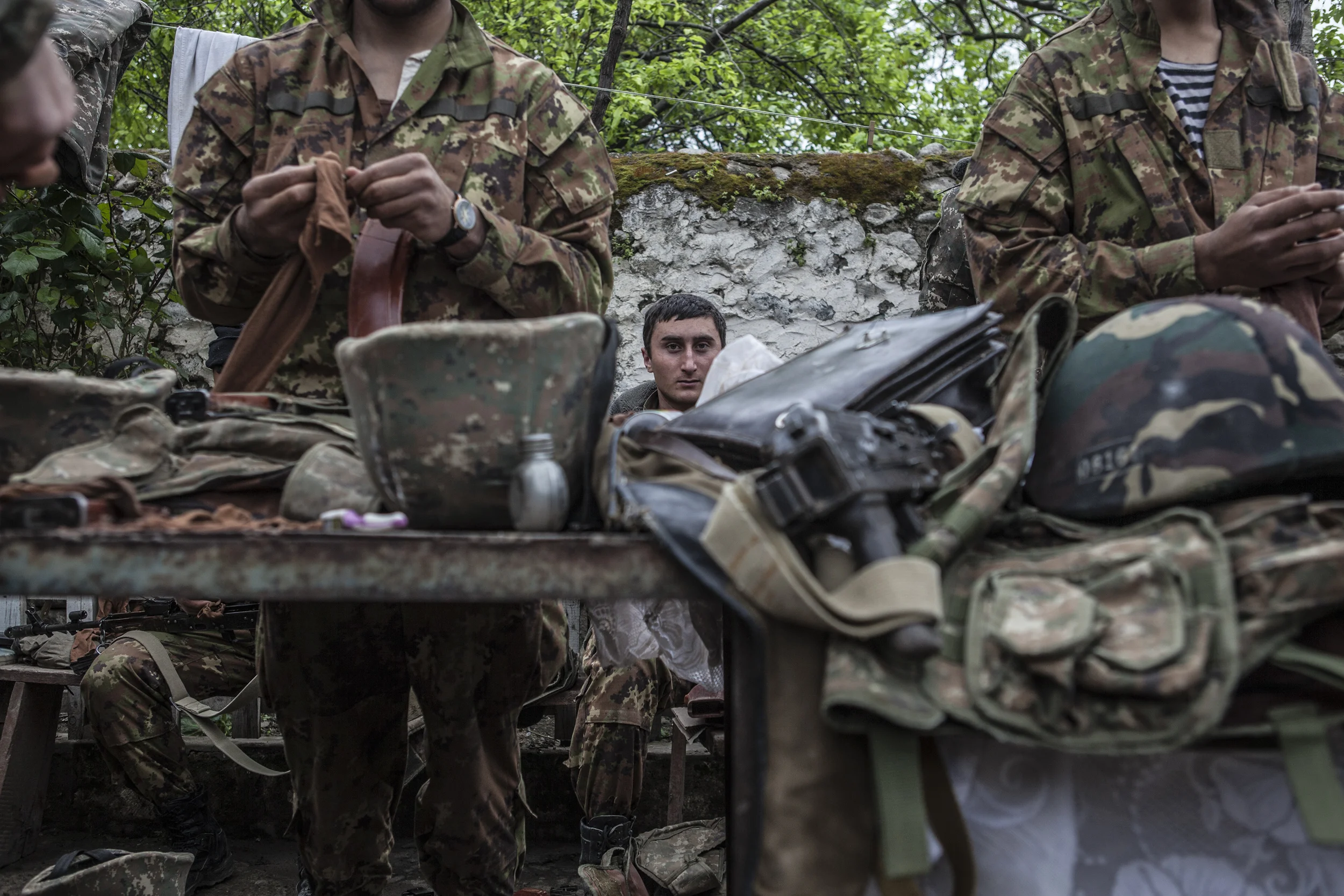
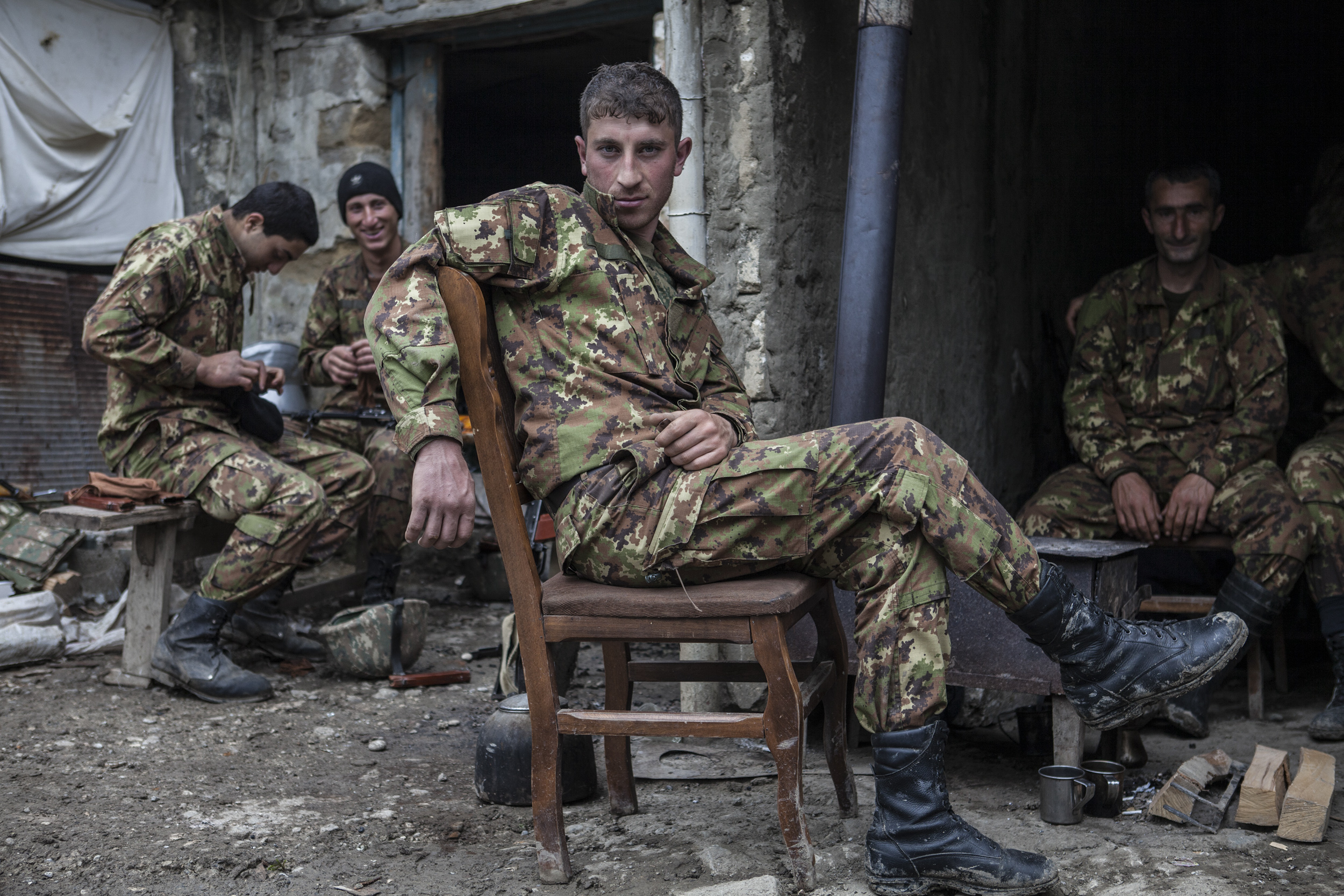
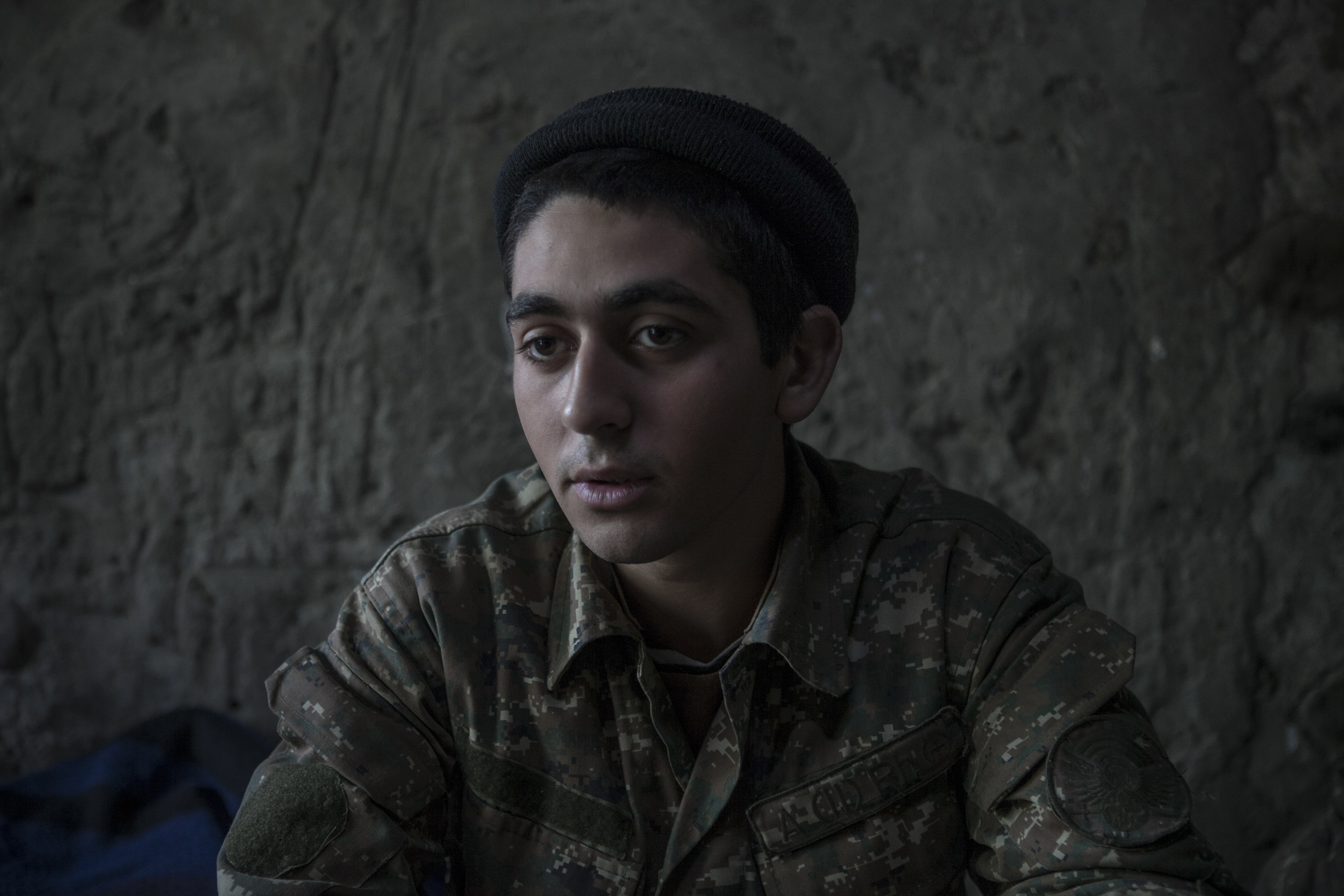











































Early morning on April 2, 2016, in the disputed territory of Nagorno-Karabakh, a 20-year fragile “ceasefire” came to an end when Azerbaijani forces attacked, and fresh fighting broke out on the Line of Contact between Azerbaijani, and the Armenian and Karabakh armed forces.
The intensified fighting that preceded the following days became known as the Four-Day War. The ethnic Armenian populated villages of Martakert, Mataghis and Talsih, where these photos were taken, were evacuated and lives again were uprooted.
Nagorno-Karabakh is a landlocked mountainous region within Azerbajian populated and backed by neighboring Armenia. From 1988 to 1994 Azerbaijan and Armenia fought a bloody war, with more than 50,000 casualties, over the territory.
The war ended in a ceasefire agreement, and in the hands of ethnic Armenians. A line of contact was established, and for more than 20 years a fragile ceasefire existed until the morning of April 2, 2016.
At the end of four days of fighting Armenian sources report a loss of 91 soldiers and 9 civilians, and Azerbaijan sources report a loss ranging 31-94. Both sides claim higher losses on the other side.
This gallery is a collection of images from April 3-5, and images from the end of the month.
Hastily, villagers were forced to abandon their homes and belongings left in ruins by Azerbaijani shelling.
Many cattle killed during shelling in the village of Talish.
April 5- shattered windows of a school in the village of Mataghis where heavy shelling had taken place.
A road in the village of Mataghis with abandoned cars and houses shelled by Azerbaijani Army - April 5.
Locals of Herher village depart after funeral services for a boy killed on April 2 when Azeri Grad rockets hit their village during the first day of fighting.
The mother of 12-year-old Vagharshak Grigoryan is escorted by her husband, right, after the boys funeral. The boy was killed when Azeri Grad rockets hit their village during the first day of fighting on April 2.
April 5 - a shelled vehicle on a road where a number of Armenian volunteer soldiers were killed the night before.
April 5 - an Armenian servicemen in a recently hit building on a base in Mataghis.
April 5 - an Israeli-made drone recovered after it was shot down by Armenian soldiers in the village of Talish on the Northern border of Nagorno-Karabakh.
Tracers fired at Azerbaijani drones on April 4.
Soldiers awaiting orders in darkness, lit only by kerosene lanterns, at a military base in Mataghis, Karabakh on April 5.
Soldiers awaiting orders in darkness, lit only by kerosene lanterns, at a military base in Mataghis, Karabakh on April 5.
Soldiers awaiting orders in darkness, lit only by kerosene lanterns, at a military base in Mataghis, Karabakh on April 5.
Soldiers awaiting orders in darkness, lit only by kerosene lanterns, at a military base in Mataghis, Karabakh on April 5.
Soldiers awaiting orders in darkness, lit only by kerosene lanterns, at a military base in Mataghis, Karabakh on April 5.
The remainder of this gallery are photographs from April 30; the northern borders of the Republic of Nagorno Karabakh where soldiers remain to protect.
